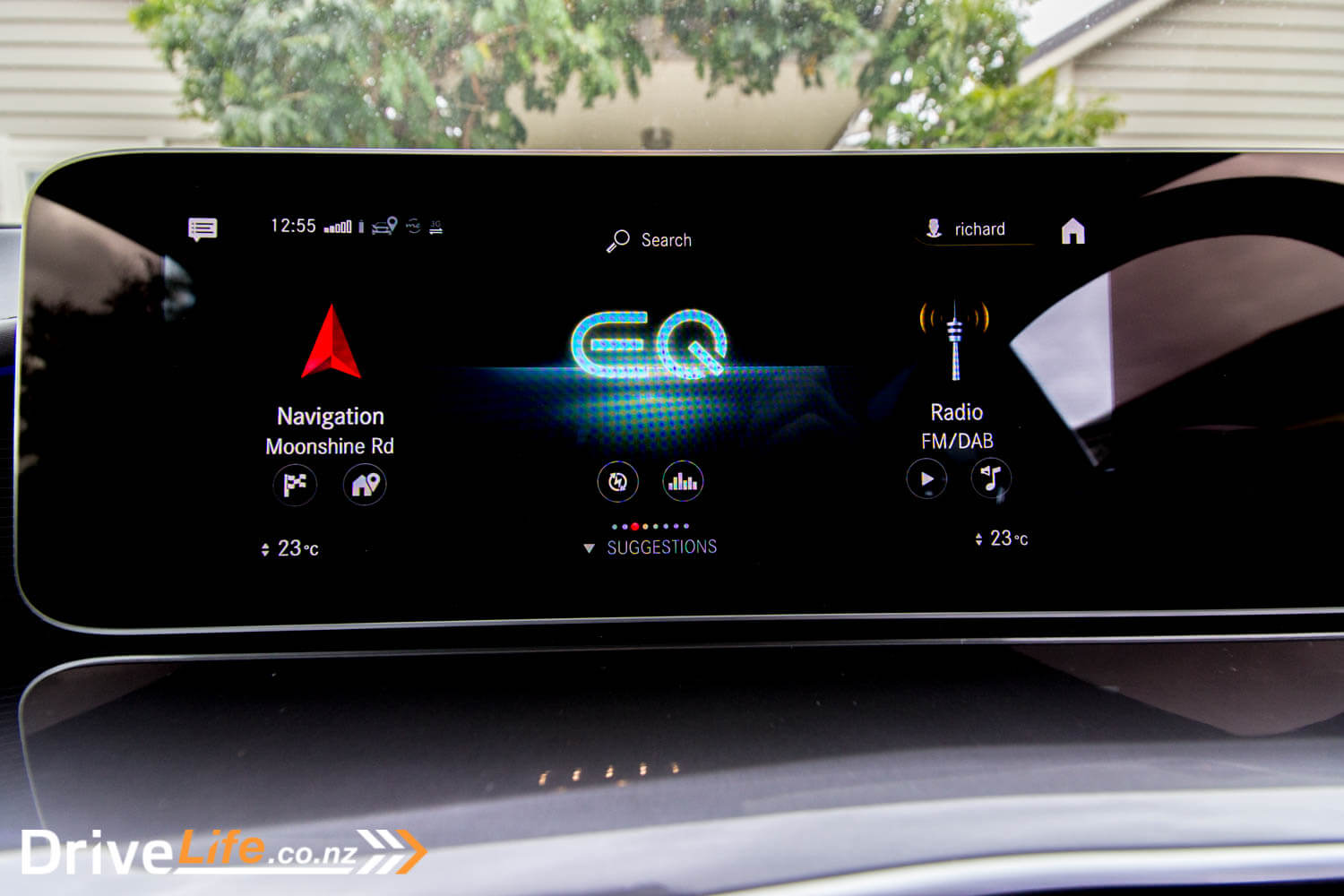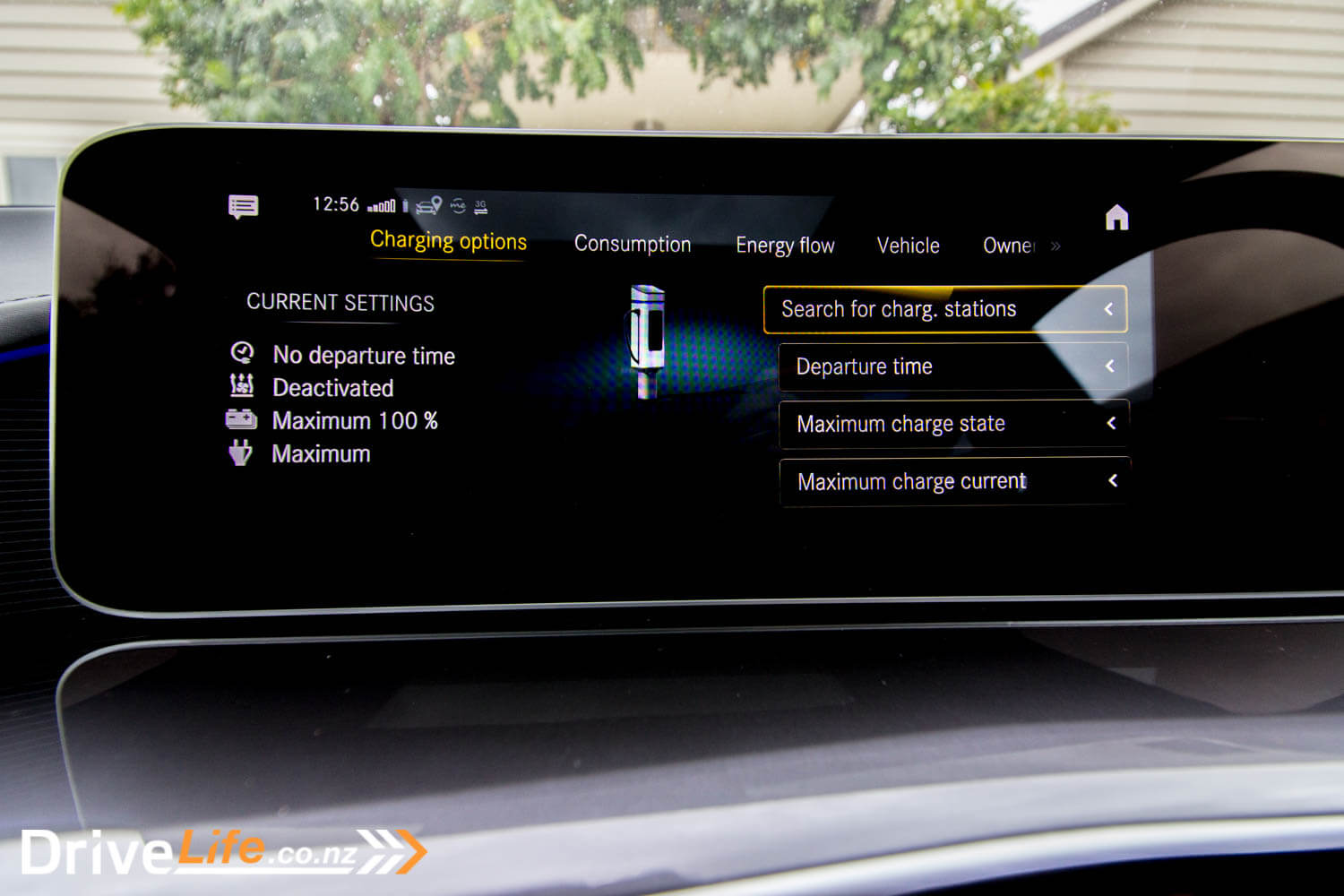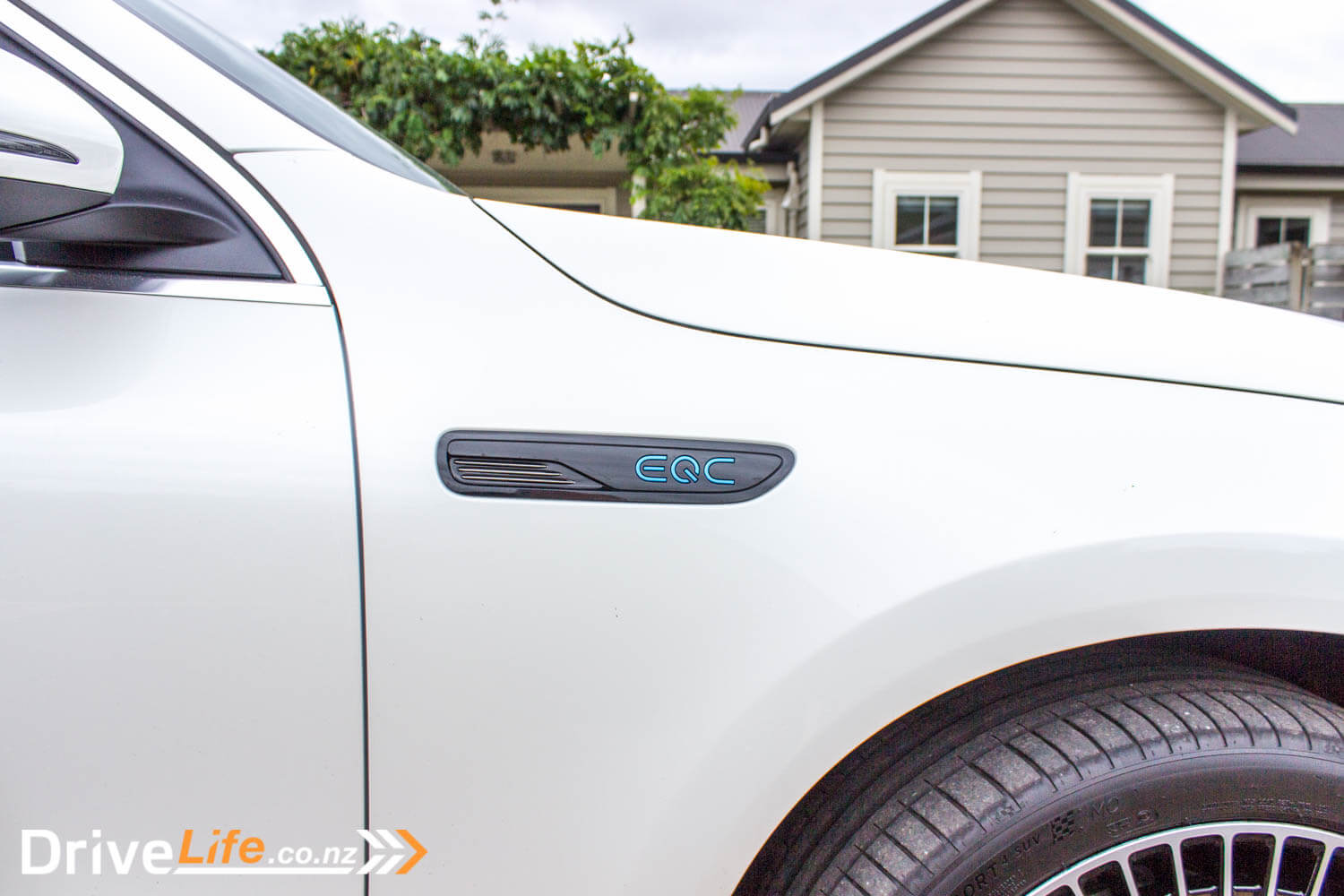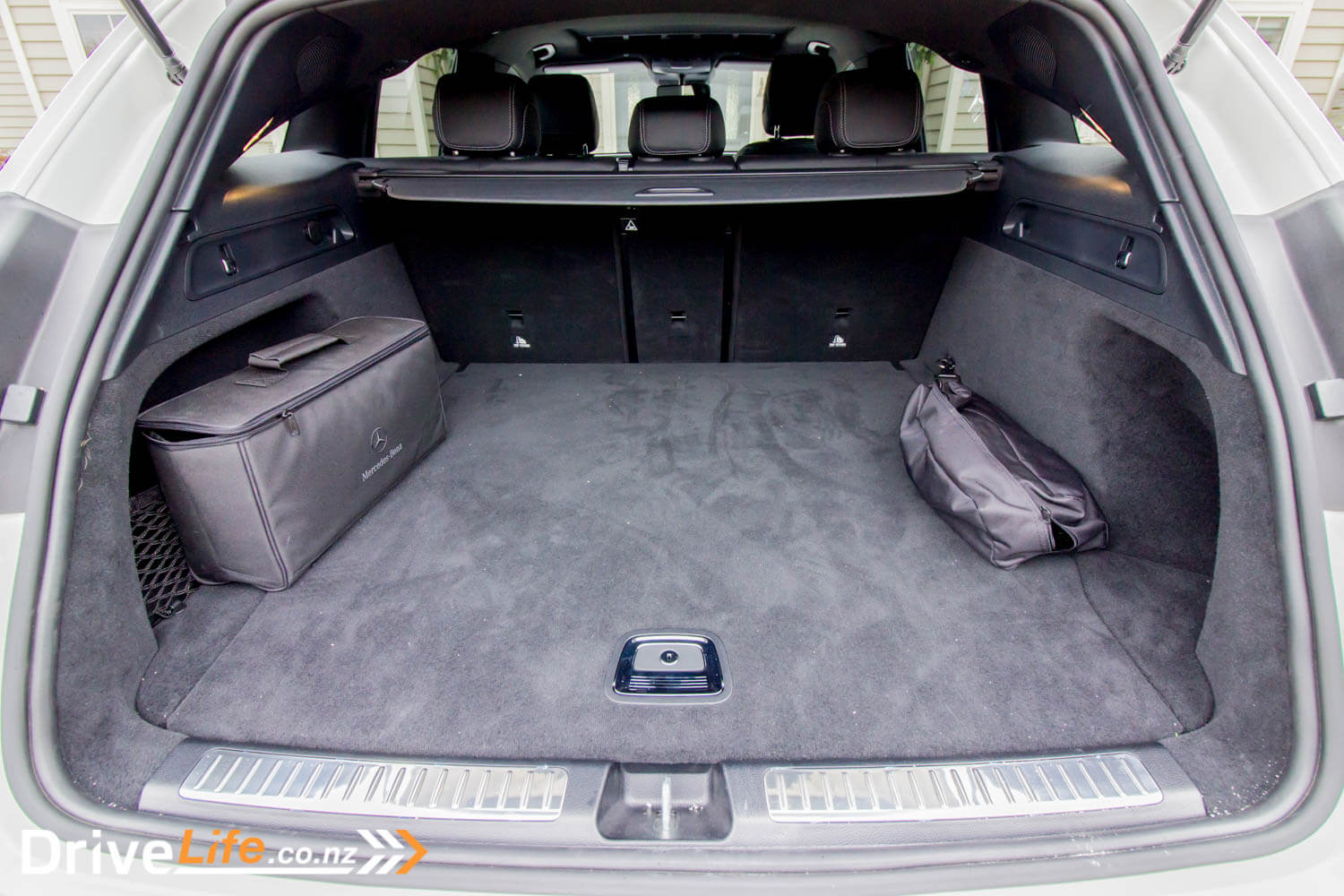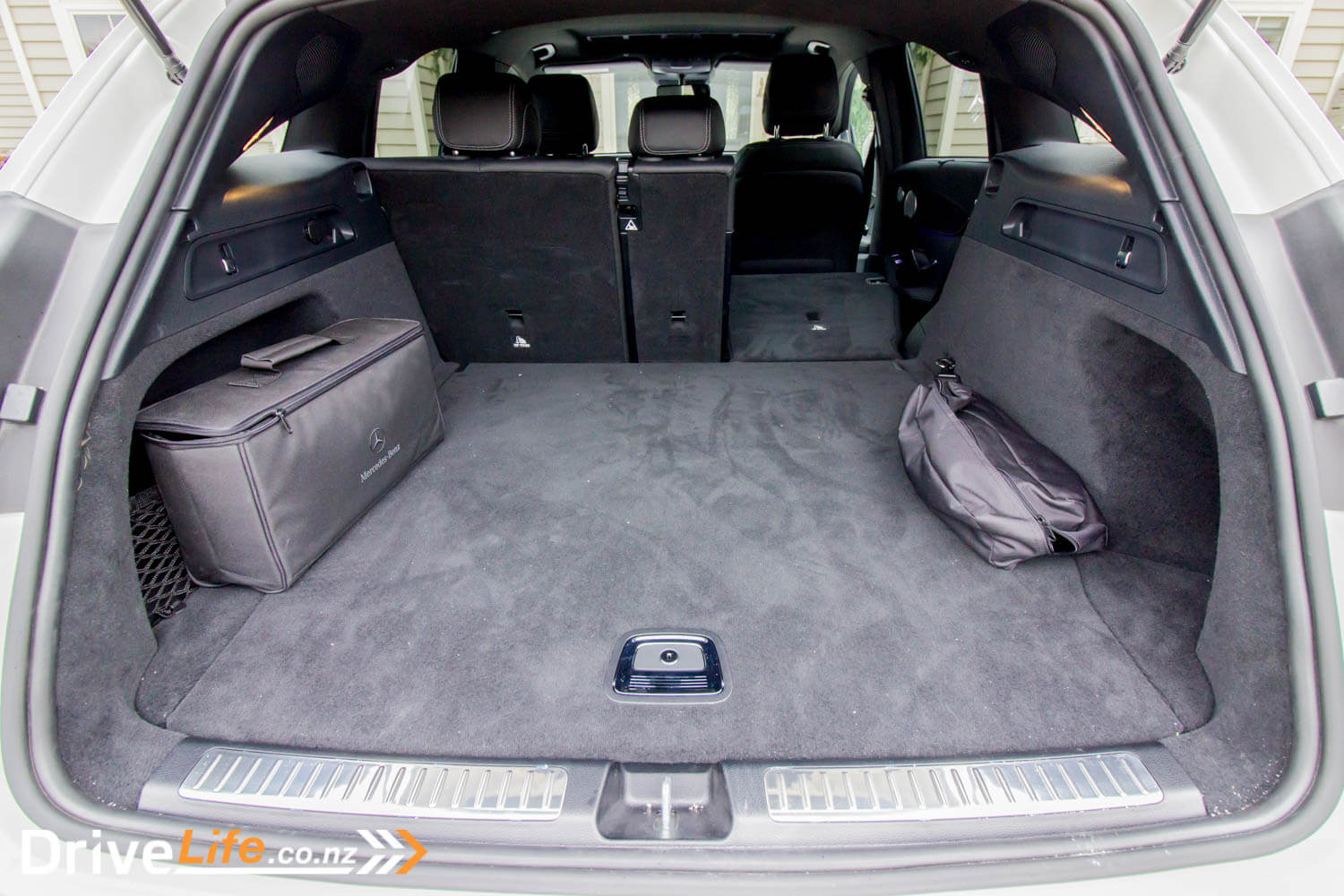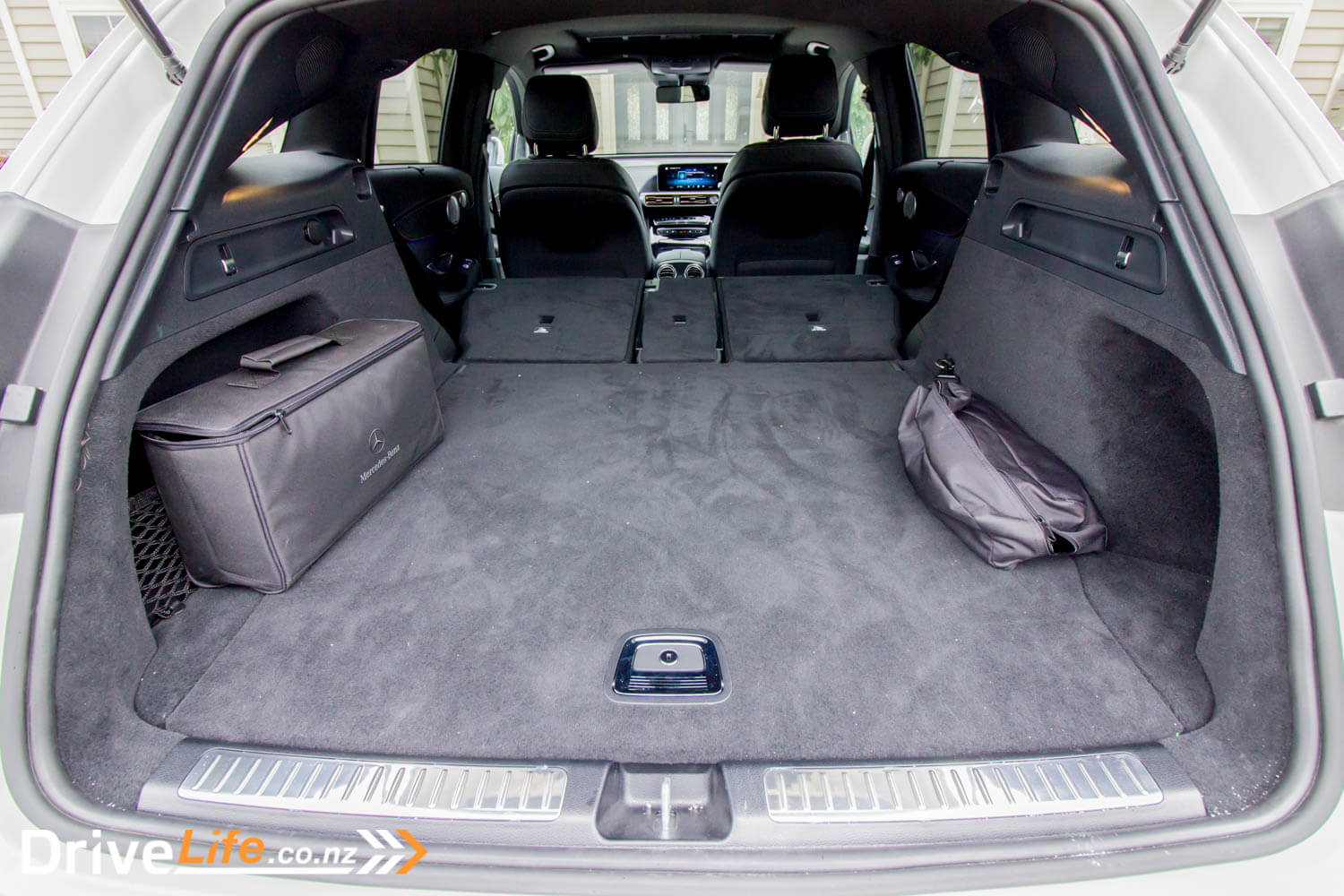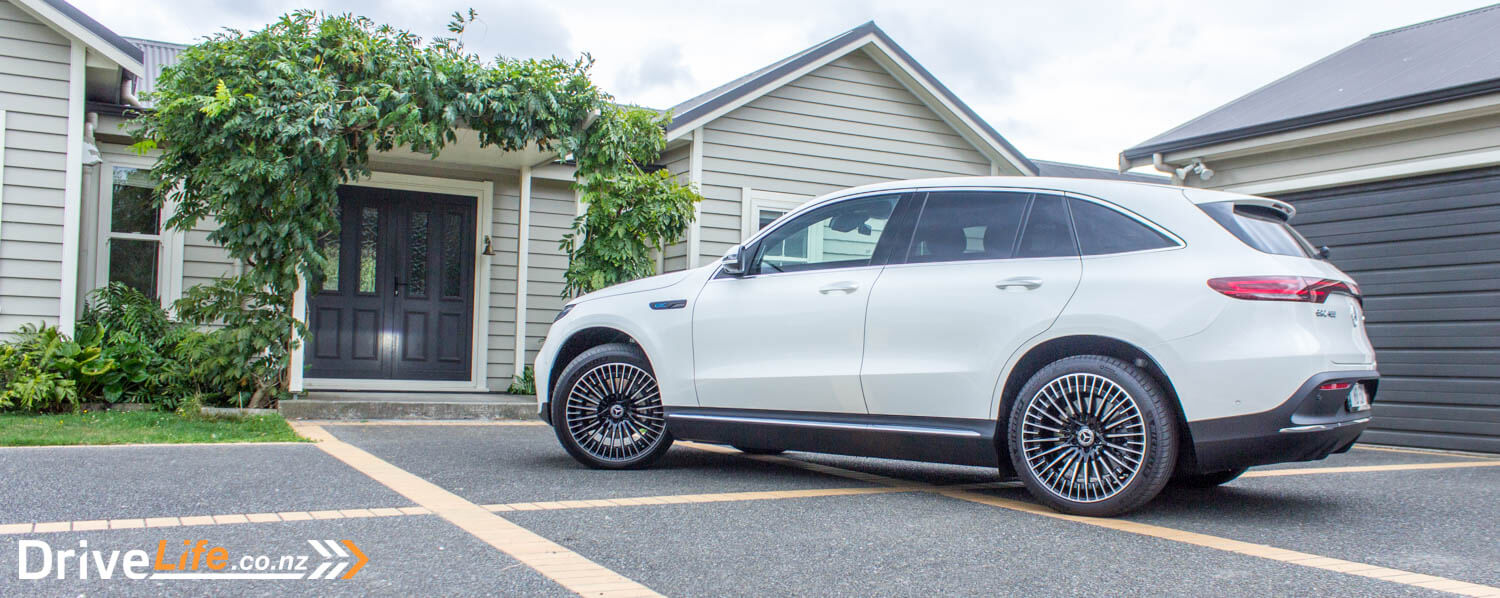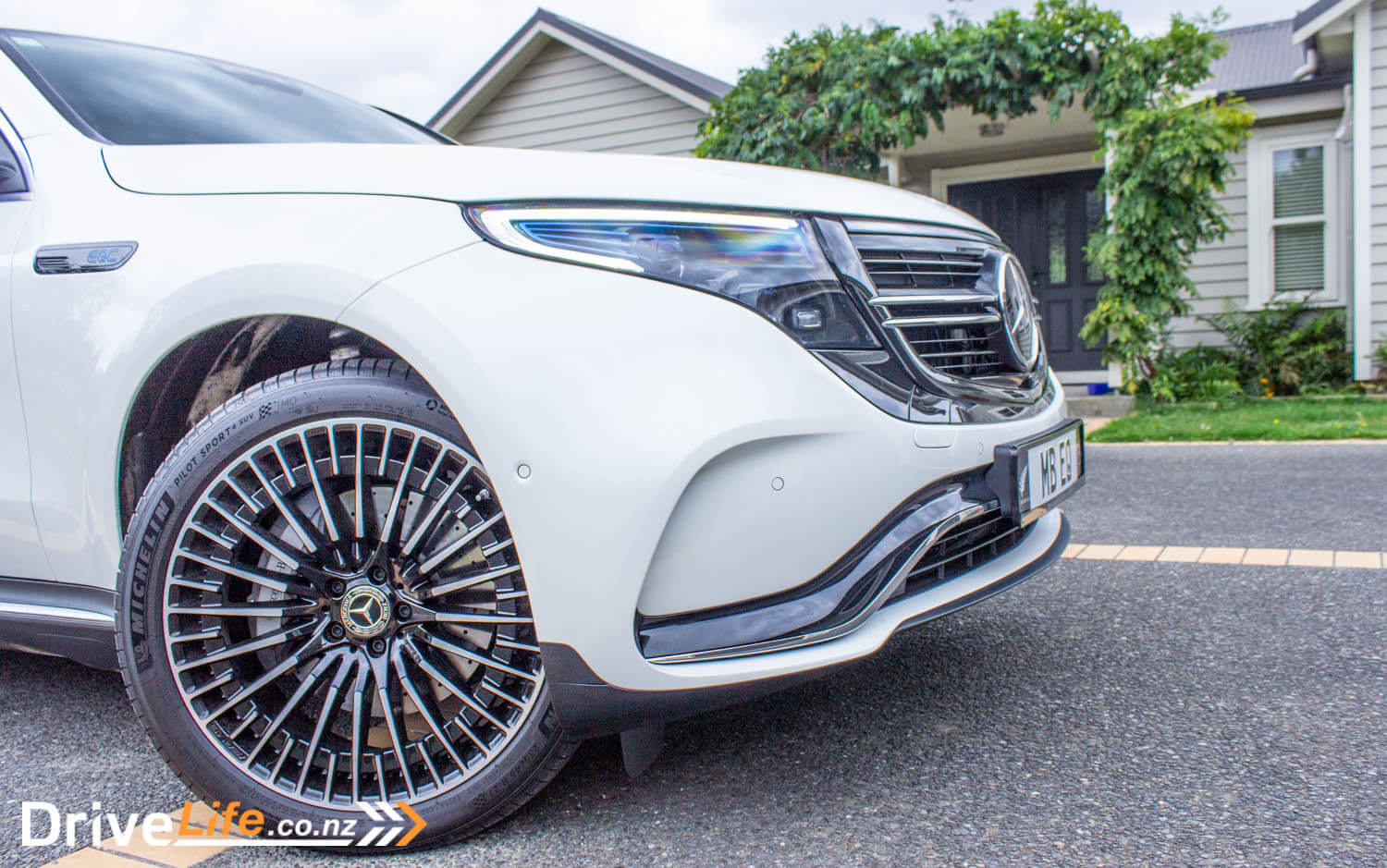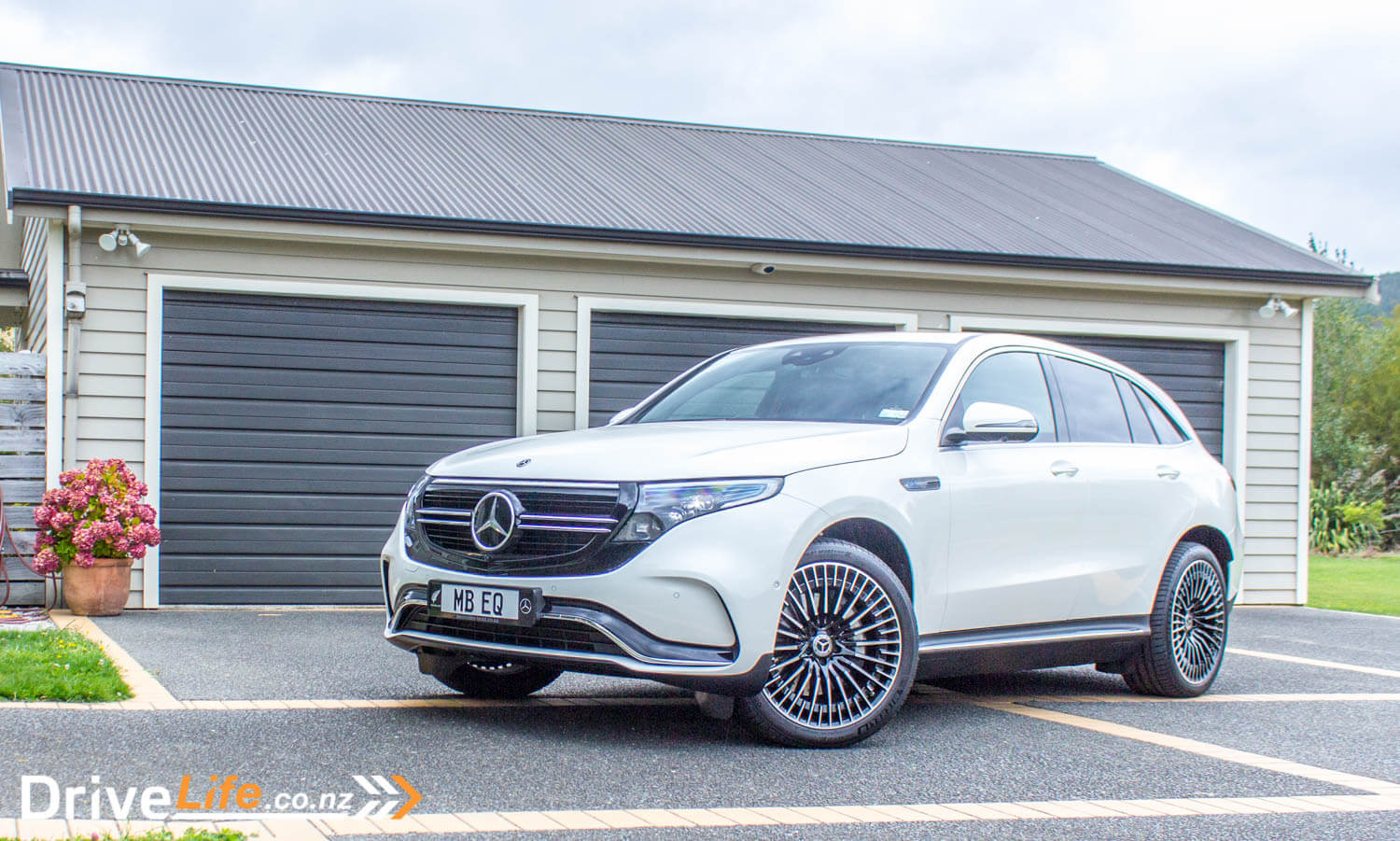A little late to the game, Mercedes-Benz finally launched its first full EV SUV, the EQC. Was it worth waiting for? Did Mercedes-Benz learn from the Jaguar I-PACE, Audi e-tron, and Tesla Model X?
We always enjoy the latest from Mercedes-Benz and AMG here at DriveLife, so I’m desperately hoping that this car was going to be good, if not great.
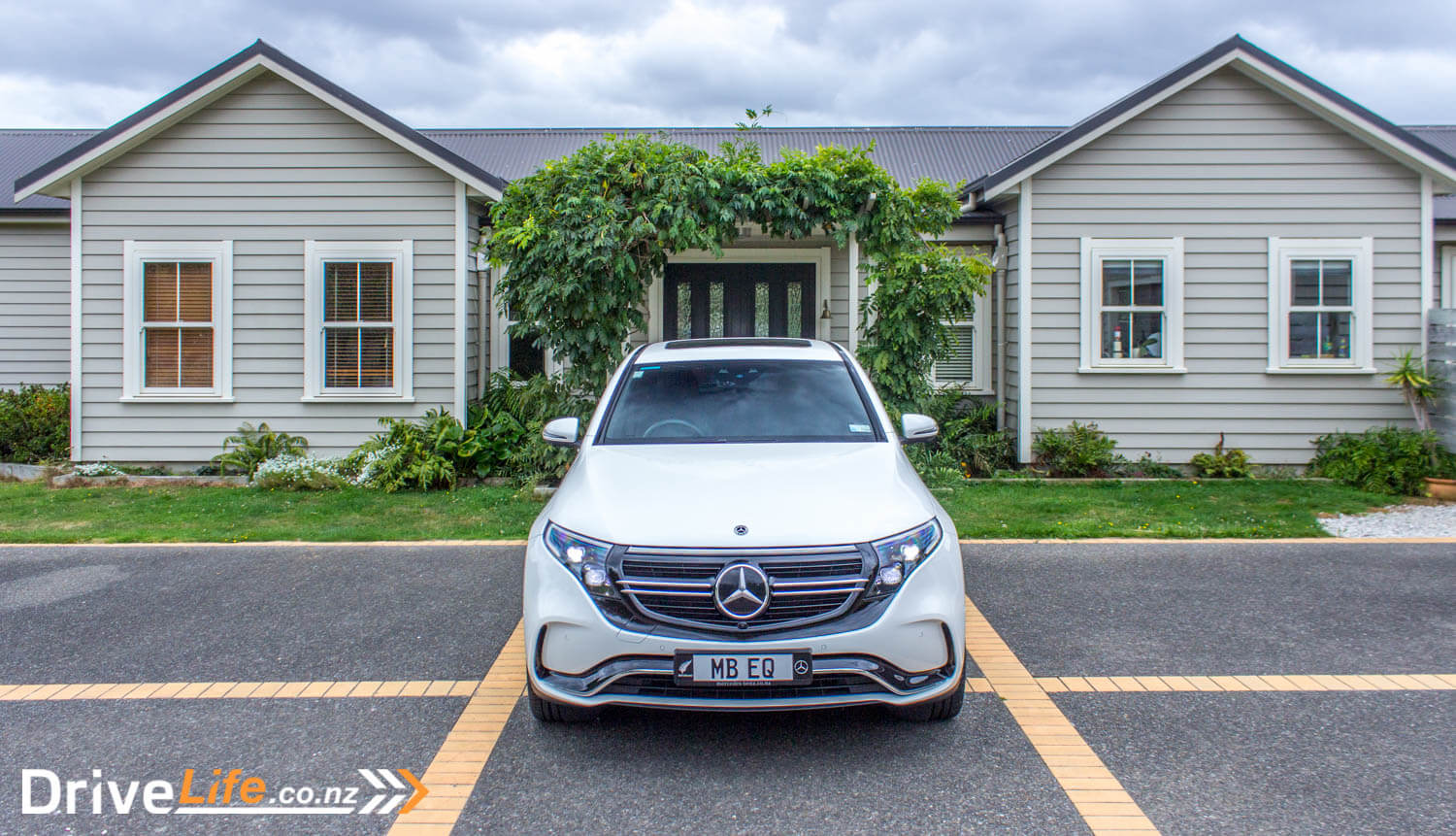
What’s In The 2020 Mercedes-Benz EQC Range?
Mercedes-Benz New Zealand is keeping it simple here, with just a single version available. It’s fitted with a decent 80kWh battery pack, and with dual 150kW electric motors gives you all-wheel drive (Mercedes-Benz calls this 4MATIC). Power output is a hefty 300kW (or 408hp), and there is an excellent 760Nm of torque.
Base price is $142,900 – our test EQC was fitted with a few extras like roller blinds in the rear doors ($600), 21” Multi-spoke alloy wheels ($1,800), and Designo Diamond White Paint ($1,700) to bring the as-tested price up to $147,000.
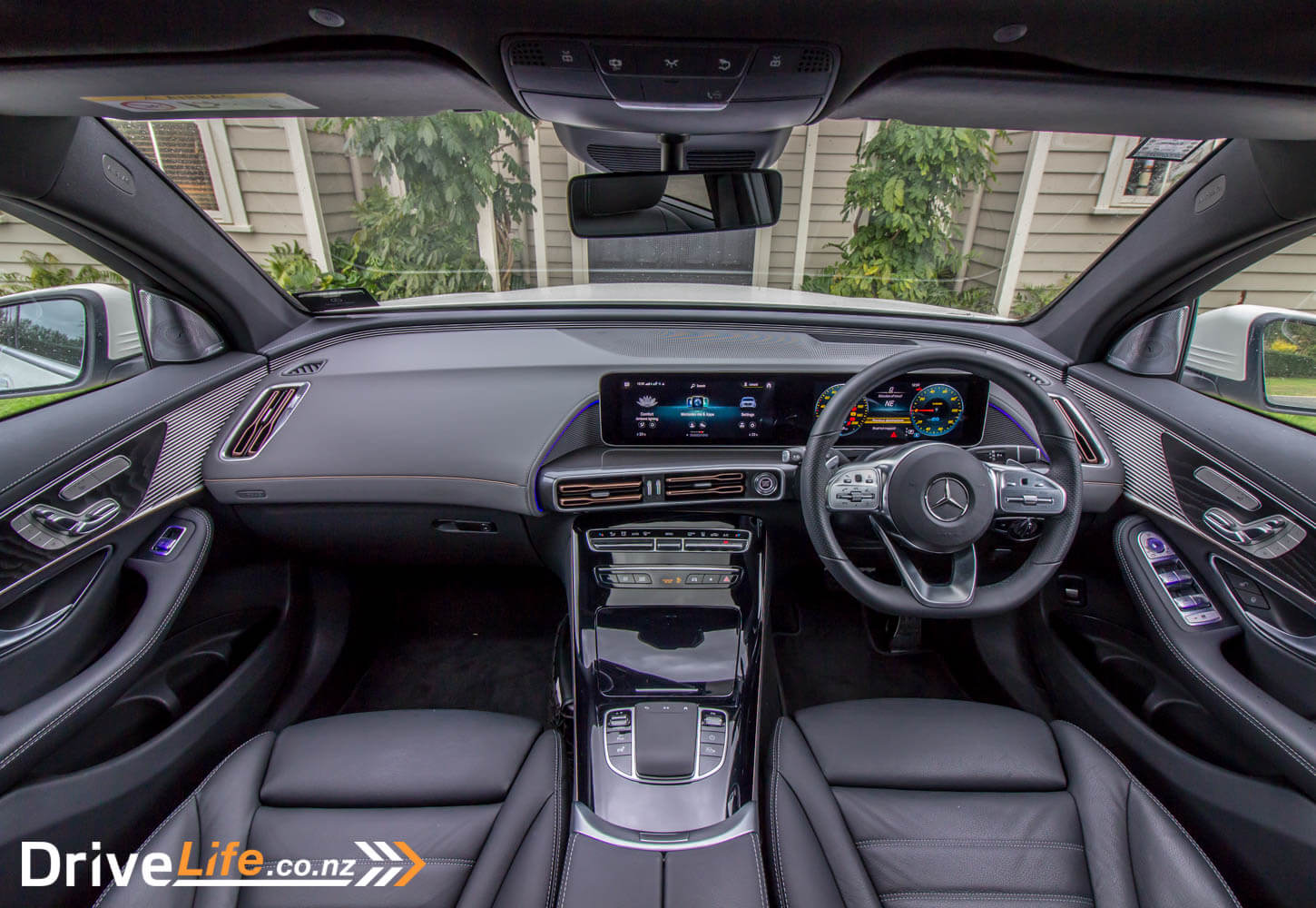
At this sort of price level, you’d expect the standard equipment level to be fairly high, and it is. This includes Multibeam LED adaptive headlights with automatic high beams, LED DRLs, electrically heated and folding mirrors, heat and noise insulating front side windows, heat insulating privacy rear glass, an electric sunroof with manual blind, metallic paint, 20” AMG alloys wheels, tyre pressure monitoring, the Driving Assistance package (that includes adaptive cruise control, route-based speed adaptation, evasive steering assist, active braking assist, active lane keeping assist, active blind spot assist and Mercedes-Benz’ PRE-SAFE System), 9 airbags, traffic sign recognition, auto dimming interior and driver’s mirror, keyless entry and start, an electric tailgate, fully automatic parking with a 360 degree camera, AMG Line interior, Mercedes-Benz UX Infotainment system, Mercedes-Me Connect, SatNav, digital radio (DAB), a Burmester surround sound system with 13 speakers and a 9-channel amplifier, 2×10.25” displays, a heads-up display, wireless phone charging, leather seating, dual zone AC, heated front seats, and Mercedes-Benz ambient lighting.
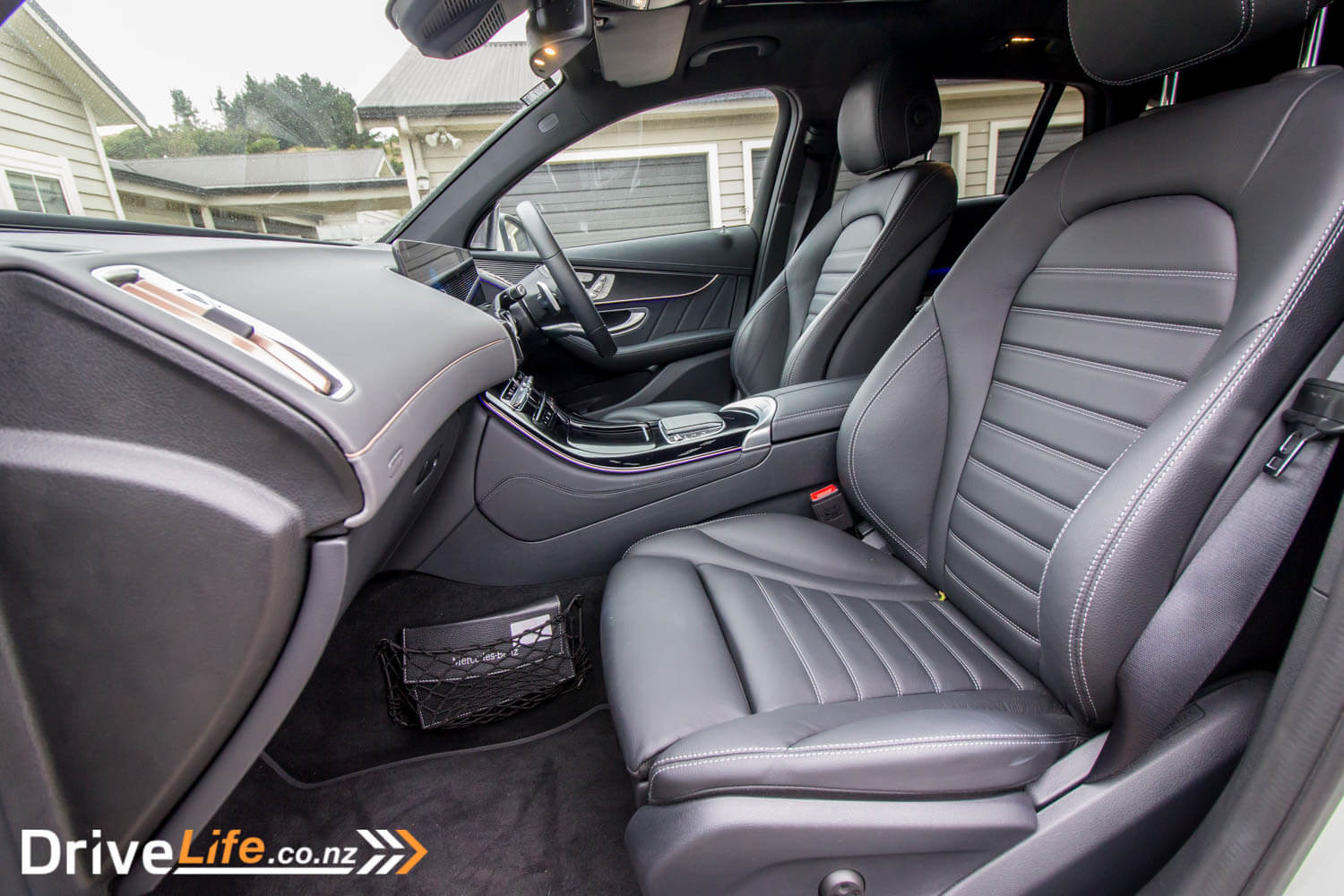
It’s great to see that you can have your EQC in a range of colours at no extra cost, with just three of the ten available colours costing you more. There’s Polar White, two blues, two greys, a silver and a black for no extra cost, with Designo Diamond White Bright for an extra $1,700, Designo Hyacinth Red Metallic for $1,000 more, and Designo Selenite Grey Magno for a rather large $2,900 more. I’m not sure anyone would want to stump up nearly $3K for another shade of grey, but it’s there if you want it.
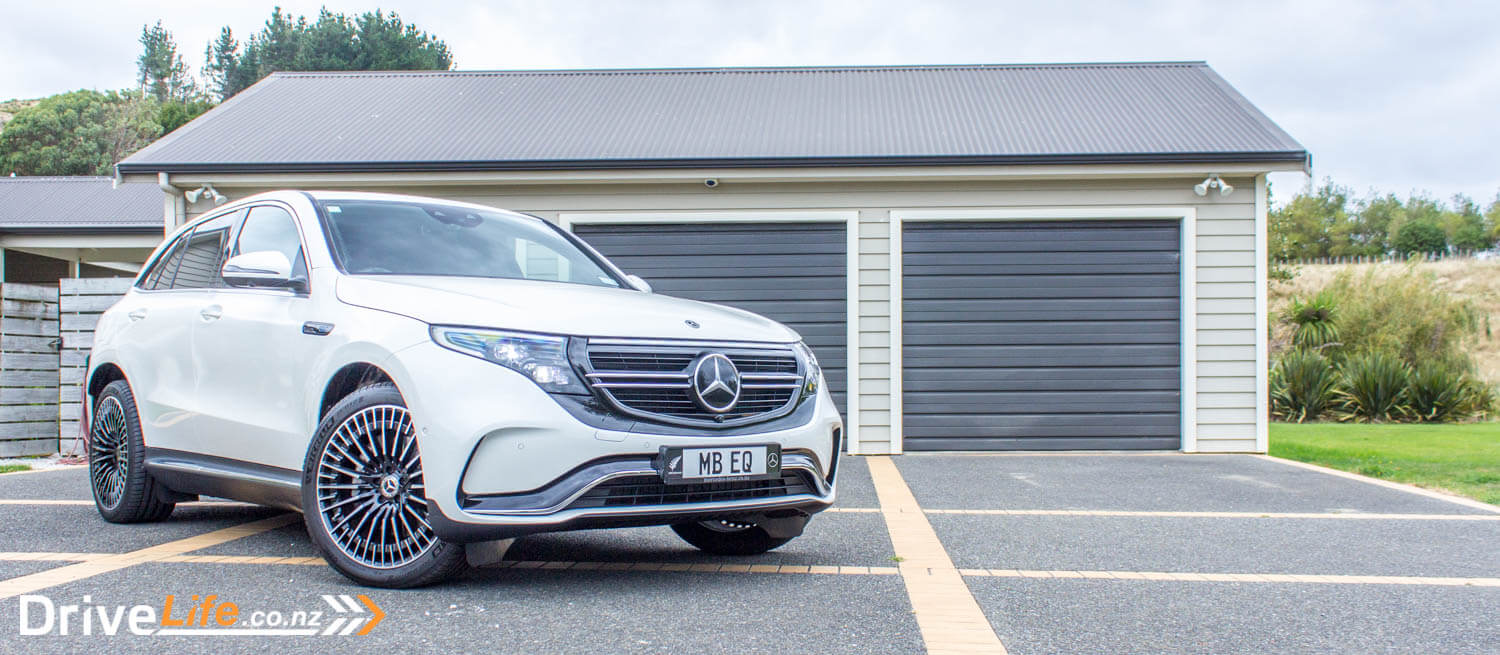
There’s a multitude of options and option packages available, like the Electric Art Line package ($5,900 MRRP) that includes top-stitching in rose gold, dashboard with fine surface texture in metallic silver grey and topstitching in rose gold, the ENERGIZING PACKAGE PLUS wellness program, AIR-BALANCE ioniser, multi-contour front seats featuring adjustable bolsters and massage function, climatised front seats, and a choice of leather finishes
You can read more about the EQC on the Mercedes-Benz New Zealand website.
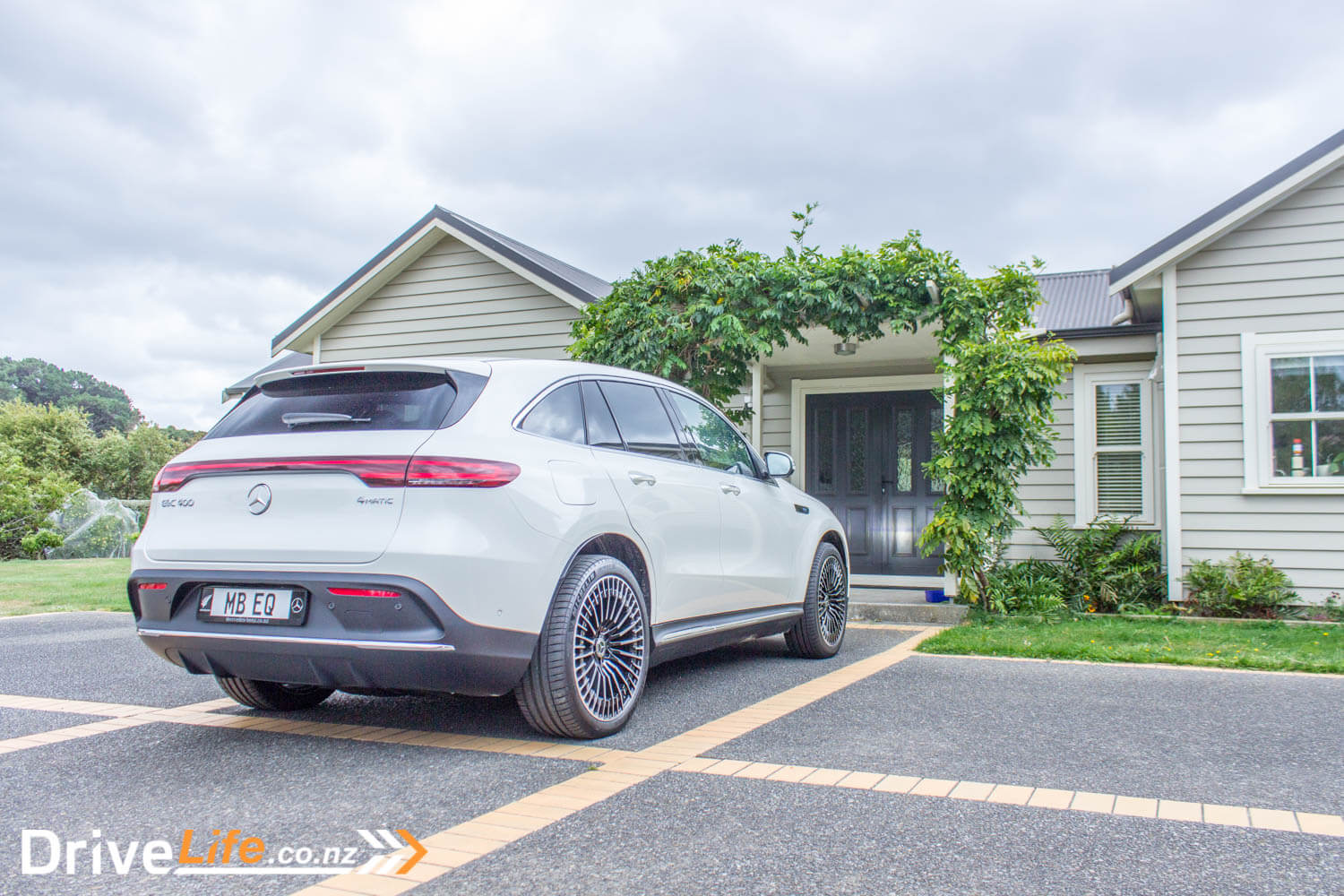
First Impressions Of The 2020 Mercedes-Benz EQC
I think the first thing anyone looking at the EQC is going to notice is those (optional) 21” wheels. On some days, they almost look retro, and then the next day futuristic. I understand they are partly designed the way they are for efficient airflow, but they were a real talking point. Some people hated them, others loved them. After a week I still couldn’t decide. A friend who didn’t like them at all was following the EQC one day, and declared that on the move, they look superb. He said the whole shape and wheels just work when the car is going around corners, so he was sold on them.
Looking at the standard rims, I think I’d go for those instead and use the $1,800 to go for climatised seating.
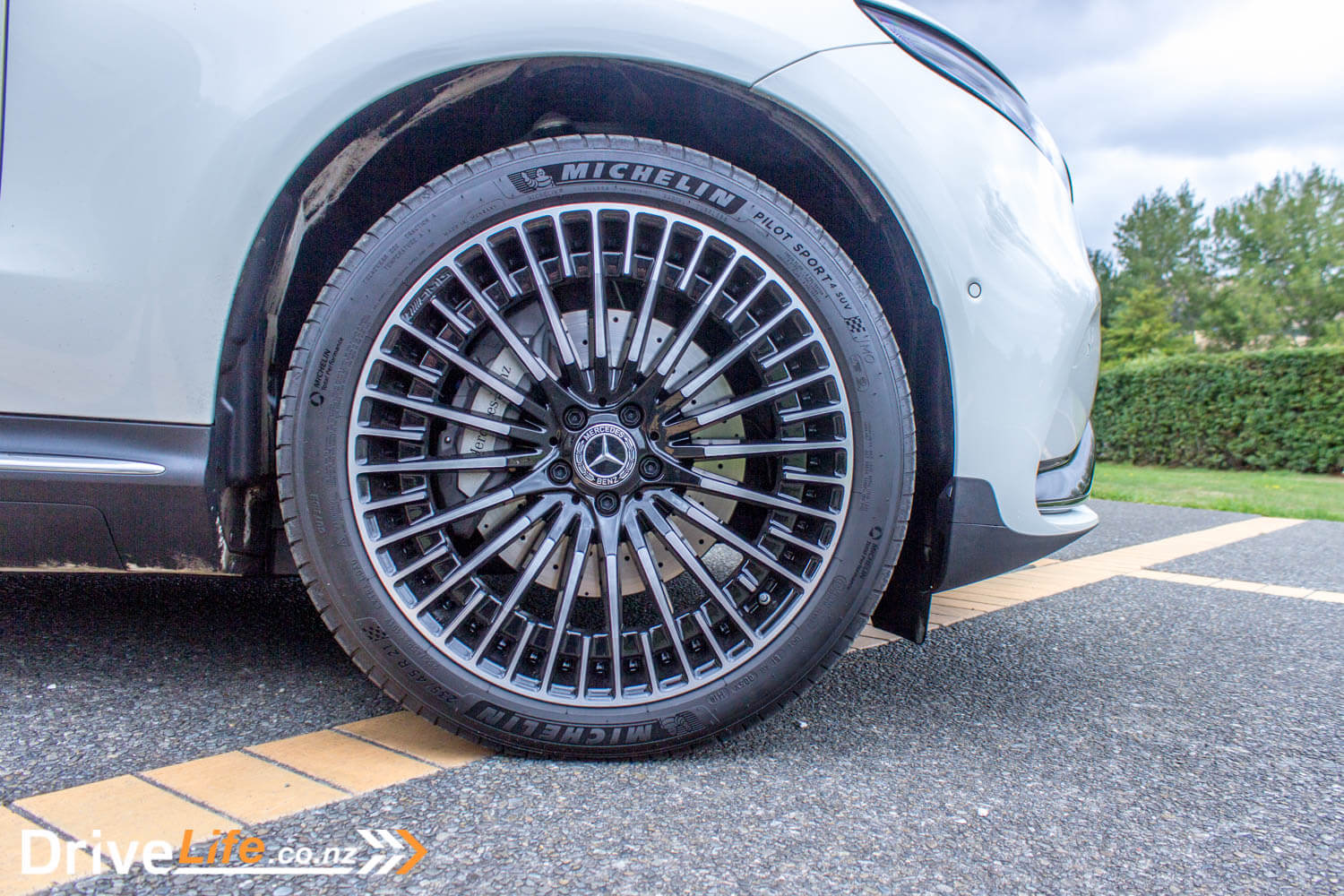
The overall design is still distinctly Mercedes-Benz, the front has a different look to it and so does the back. It disguises the size of the car a bit, as it feels larger than the Audi e-tron, and sure is a lot bigger than the Jaguar I-PACE. The Tesla Model X is larger again of course, but that’s in a class of its own for its physical size.
The Designo Diamond White Bright our test car was finished in suited it perfectly.

What’s The Interior Like On The 2020 Mercedes-Benz EQC?
It’s mostly déjà vu on the inside of the EQC, all very traditional Mercedes-Benz quality and design. There’s the almost standard (for Mercedes-Benz at least) two 12” screens, the normal placement of buttons and controls. I liked that Mercedes-Benz haven’t gone off and made it different and funky – it even has the obligatory Mercedes-Benz column shifter for the ‘transmission’, so someone who is used to driving a Mercedes-Benz SUV will jump in and feel right at home.
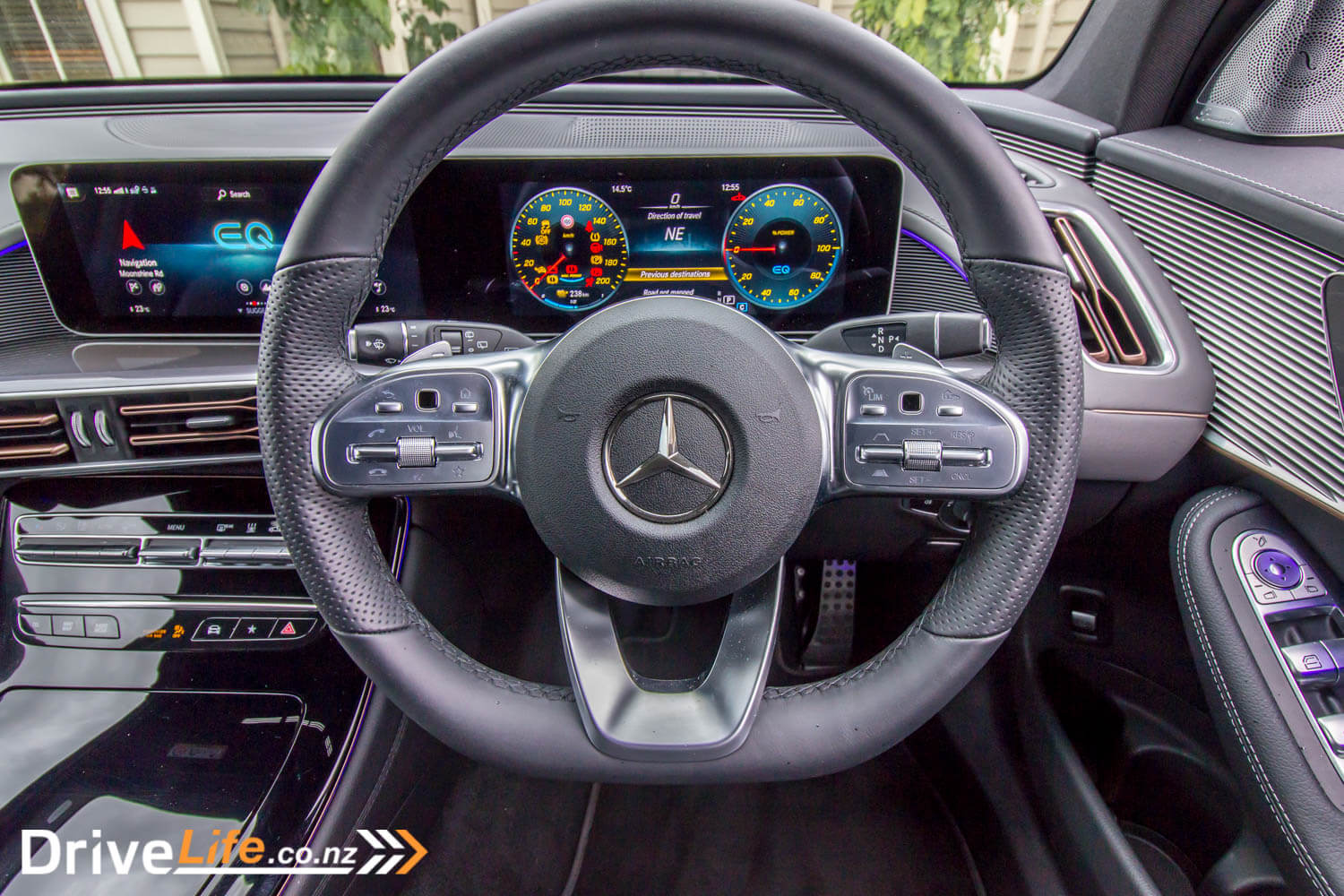
Well, almost right at home. It seems Mercedes-Benz Have decided they couldn’t leave the interior exactly as other Mercedes-Benz SUVs, so have carried that turbine look of the wheels to the interior. There’s some funky designs splattered around the front of the interior, the tops of the front doors have some turbine-like finish to them, and this is carried right across the top of the dash. The only problem with that was the reflections that the trim forced onto the windscreen in certain light. It kept catching my eyes and distracting me. Not great.
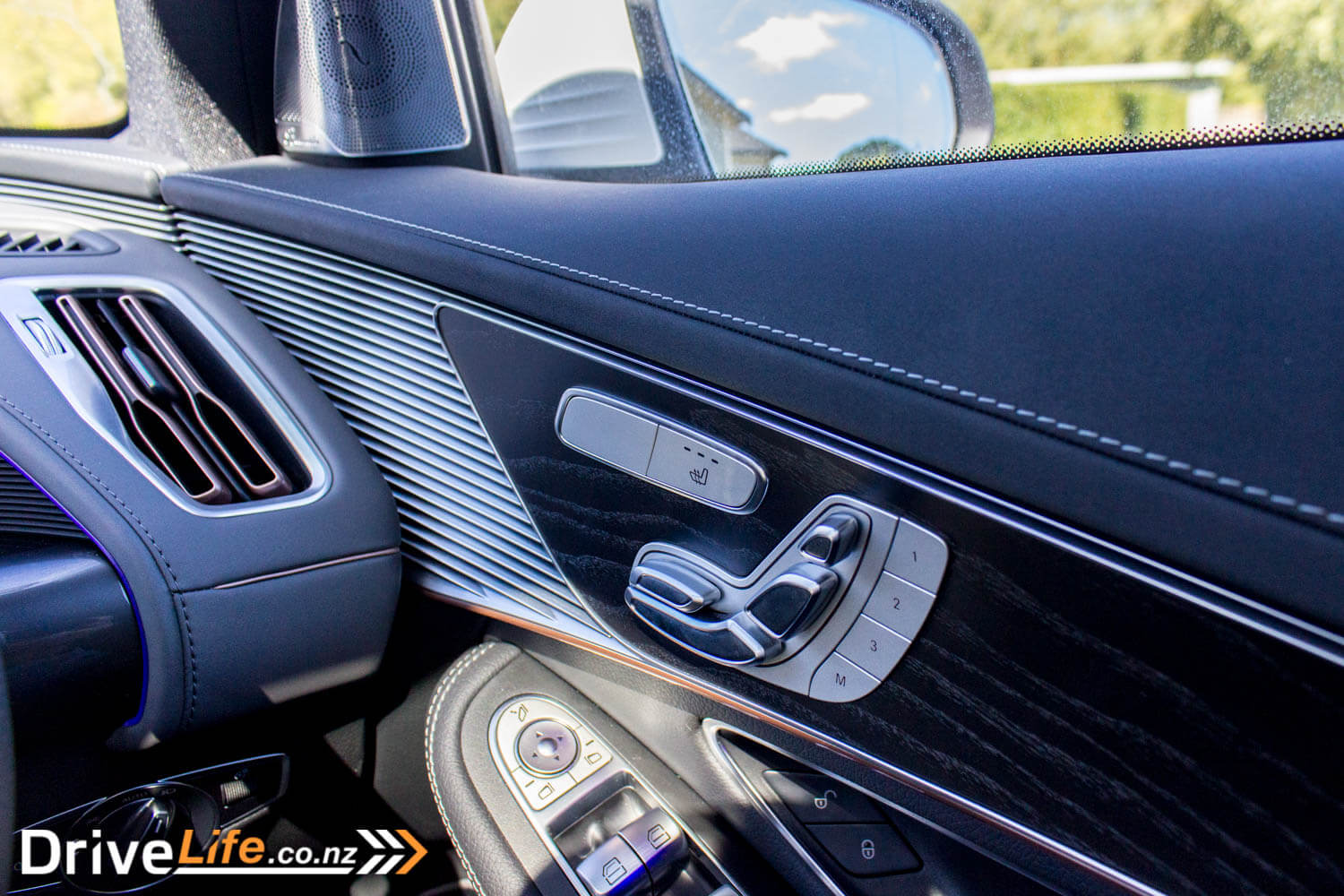
They’ve changed the air vents too, and given them a bronze finish for some reason. Still, it’s 95% stock Mercedes-Benz SUV, and there’s nothing wrong with that.
The doors have some nice, black open pore wood on them, and the normal controls for the seats. The EQC comes complete with both front seats having electrically adjustable headrests, and an electric seat cushion extender for those with long legs. Speaking of the doors, there’s a weird design ‘feature’ to them that took a while to notice. When you lower the window on any door, it doesn’t go all the way down, as the inside part of the door is higher than the outside. I’ve not seen this before, and don’t really understand the need. I’m sure there must be a good reason, but it does make for a higher door and smaller window. From the inside, the rear windows in the EQC are bordering on tiny.
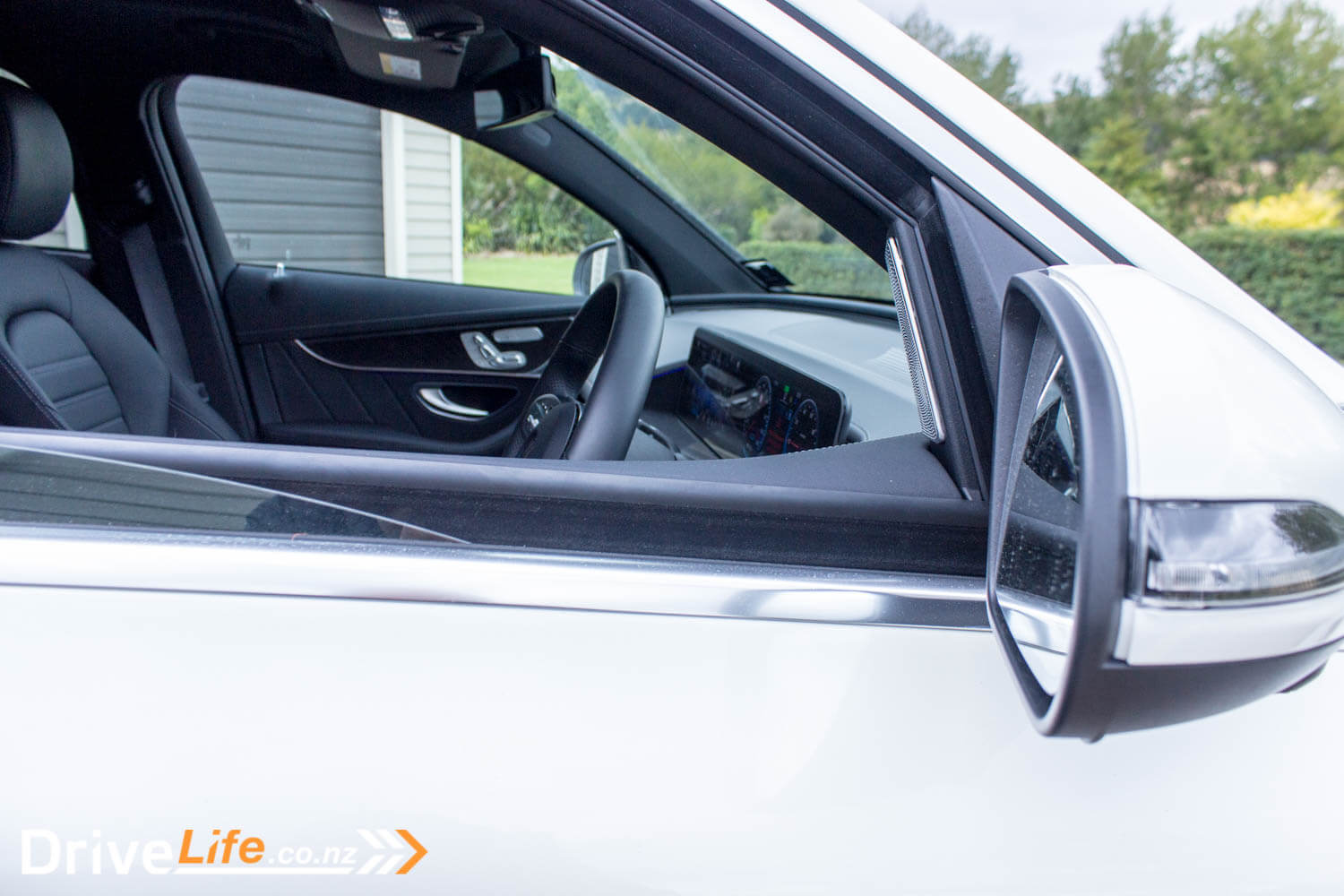
Back in the front, there’s a very high centre console finished in piano black. I’m not sure there’s a need for such a high console in an EV (especially with the column shifter), but there it is. The centre cubby is very generous, and fits two SLR cameras in comfortably and has two USB ports in it.
The EQC has an electric sunroof, but it’s not panoramic, and even at over $140,000, the blind is a manual one, which really surprised me. The sunroof sucks up quite a bit of headroom, especially in the rear. Rear legroom is good, but not great. There’s two USB C ports for rear passengers, and a grateful addition is the (optional) manual sun blinds in the rear doors. Great for kids and babies.
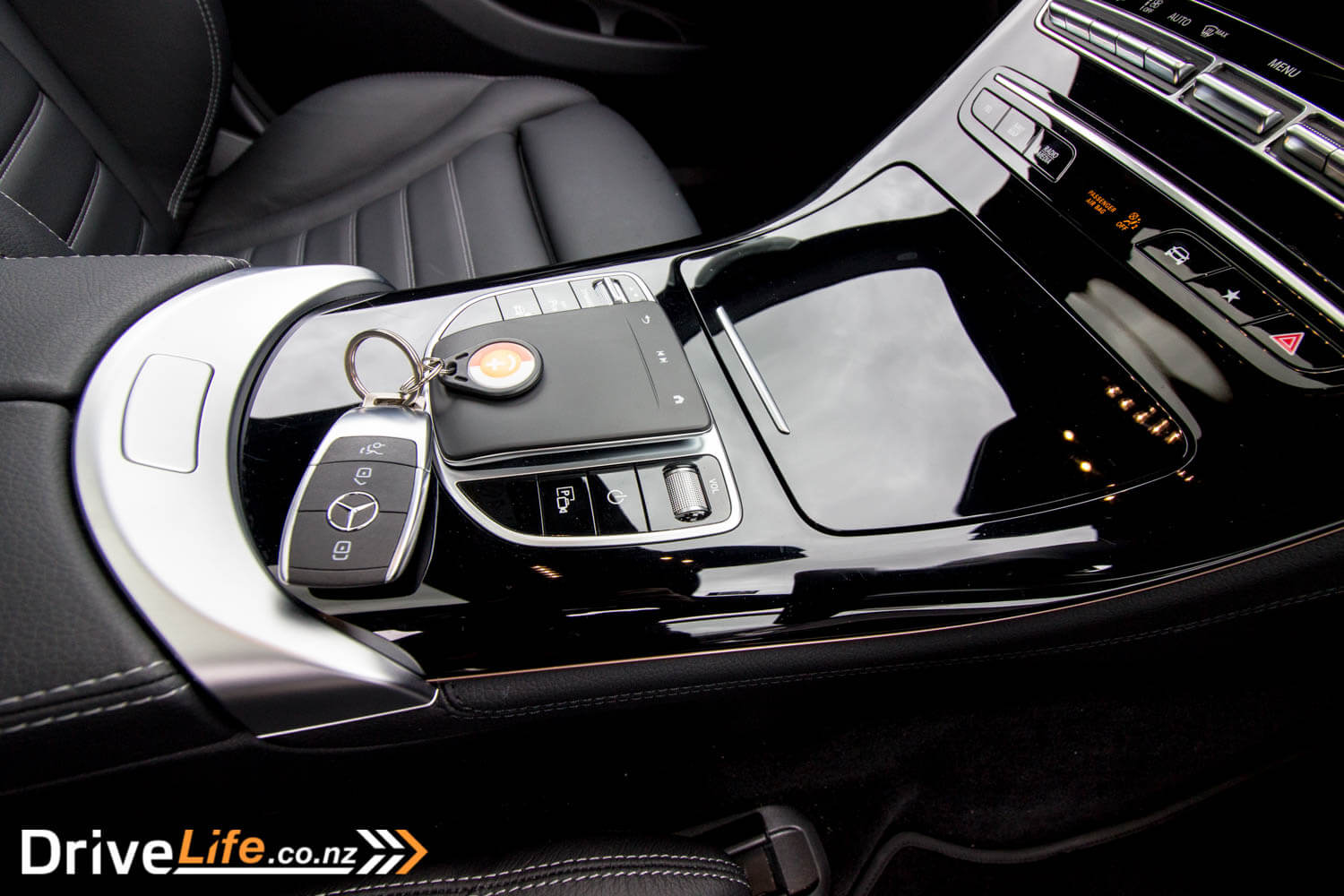
There’s another single USB C port up front of the car, and it comes with an adaptor cable to plug in ‘normal’ USB devices.
Without a doubt, the interior oozes quality. The stitching is perfect, and every join is perfect. Fit and finish is a highlight, as it is with most Mercedes-Benz cars we get.
At 500 litres there’s a good amount of usable storage space in the boot, including some shallow spots under the lockable rear floor. You can also release the rear seats from buttons in the cargo area, but they are a manual release, so they’re not able to electrically return upright again.
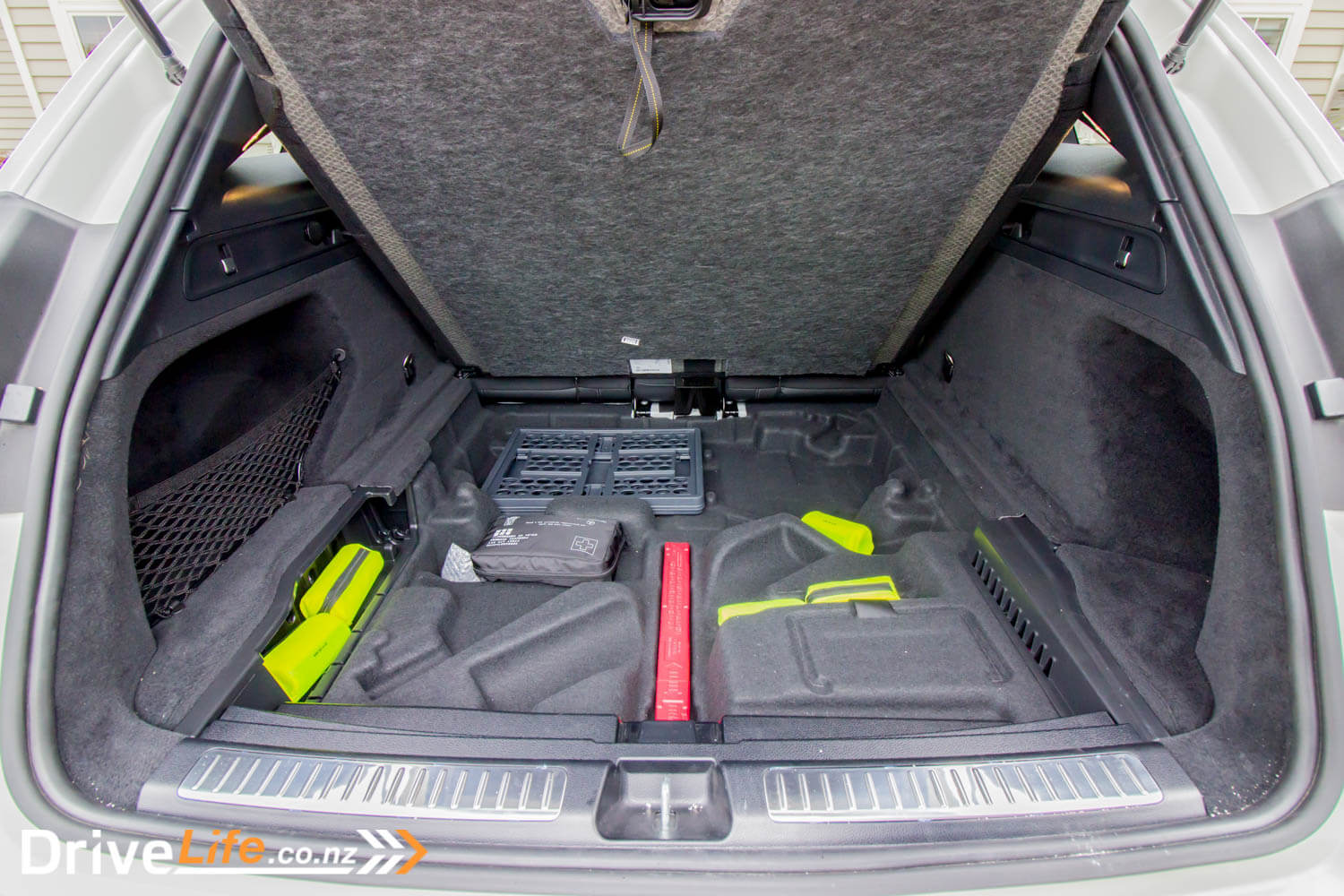
What Does The 2020 Mercedes-Benz EQC Drive Like?
I’m a bit torn when it comes to the performance of an EV SUV in this price range. There’s the Jaguar I-PACE, which feels like a rocket ship, and then there’s the Audi e-tron, which doesn’t have the feel of an EV unless you are driving it in Sport mode – then it picks up its skirts and you feel all that instant torque. I really want something in-between those two cars for performance. Well, the EQC is just that. It has the almost same feel and punch of the I-PACE, but it’s not so in-your-face as that car. But it’s definitely ahead of the e-tron in performance, with a 0-100km/h time of 5.1 seconds. A win? For me, yes.
Before all the Tesla-ites get up in arms over the performance of the Model X – well, we haven’t tested one yet, but that will happen next month (postponed due to the C-19 lockdown), and then we can do a comparison of that car and the EQC/e-tron and I-PACE.
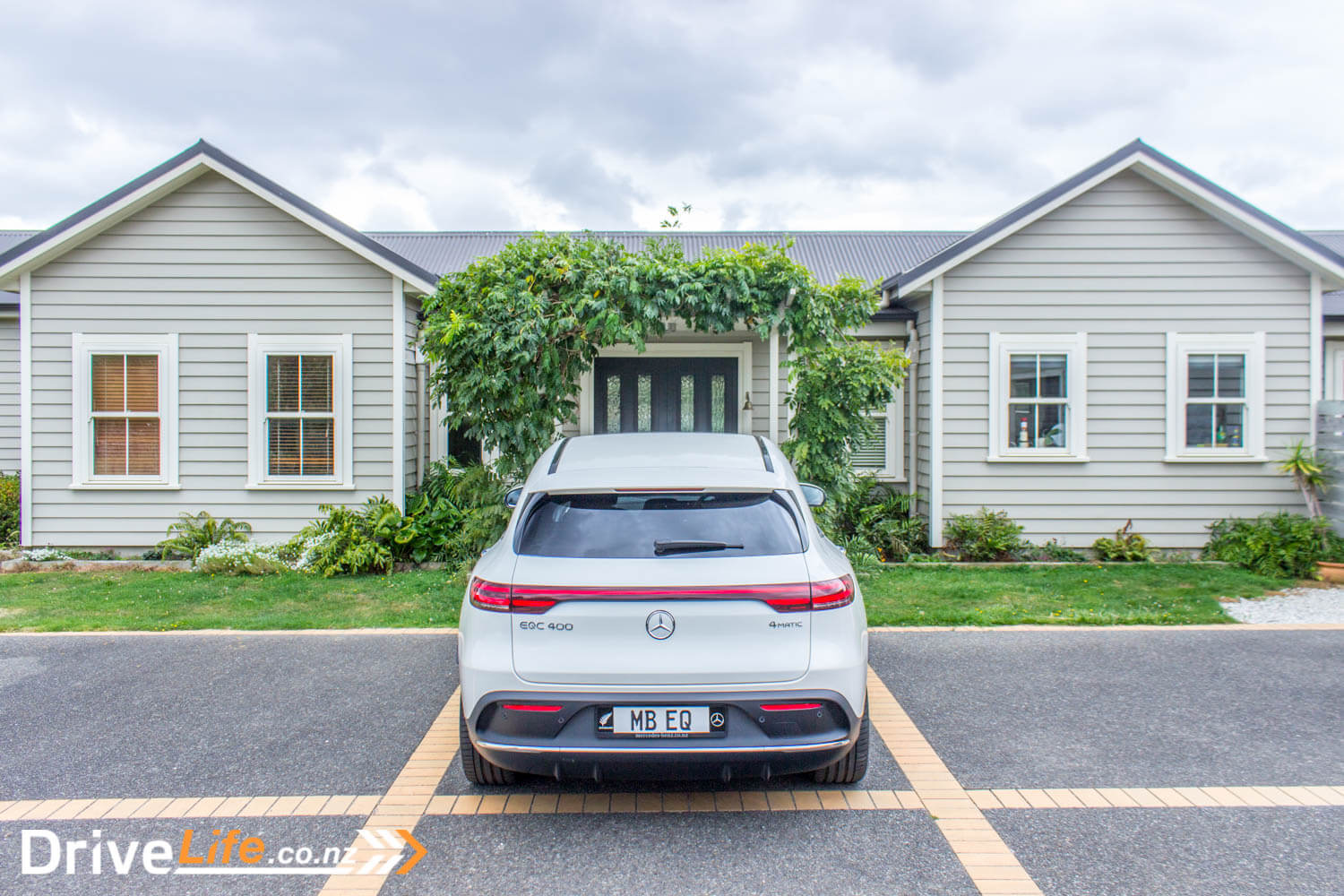
Back to the EQC. Yes, it can really move it. It will give your passengers a surprise as the car shoots forward with that 765Nm of torque, available at any time. Floor it on a bit of a bend, and the tyres manage to give you some ‘chirps’ as it momentarily breaks traction, then systems kick in and you are propelled ahead. The tyres are Michelin Pilot Sport, so this is some sticky rubber the EQC is running. Luckily they are, with 300kW on tap, you need that grip to get the most of the car. Flooring it at the lights on the motorway up to the legal limit is a blissful experience, as of course there’s almost no noise, but you still get the feeling of the acceleration as you are pushed back into the seat.
Enough of the performance of the EQC, I think you get the point. It’s bloody fast for the size of the car.
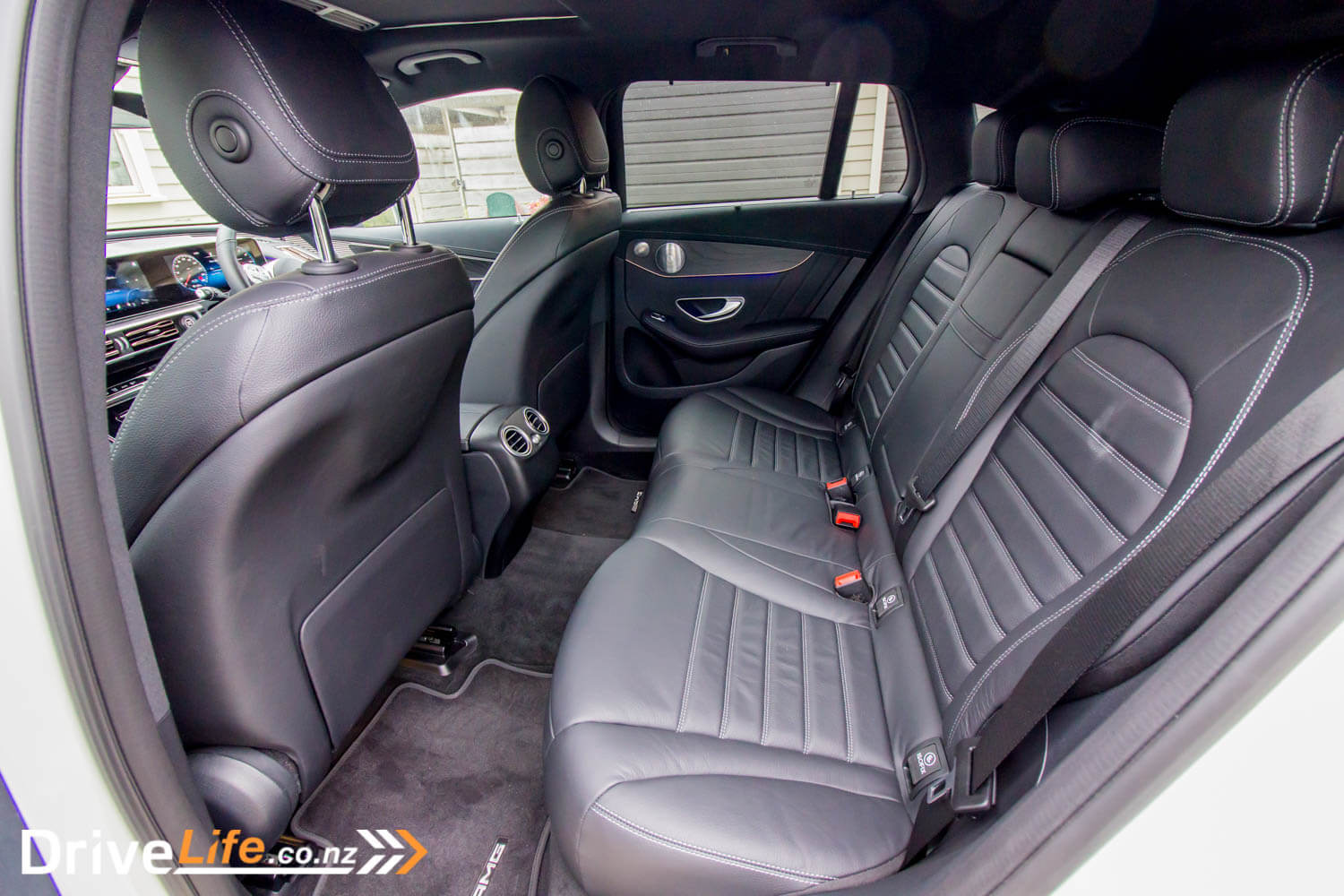
Mercedes-Benz have copied other brands who have switched the paddle shifters to become the adjusters for your brake regeneration (regen). You can use brake regen to give yourself some ‘free’ charge into the batteries, especially handy down some of Wellington’s longer hills. The standard setting sees minimal regen, and the slowing of the car when you take your foot off the accelerator is around the same amount as a petrol or diesel automatic. Pulling the left paddle once sees quite a bit of regen, and this is sufficient in most cases to slow the car that much more, and of course give you that much more power going back into your batteries. And then there’s the next (and last) level of regen, which pulls your face forward as the car almost stops. I could only use this on the steepest of hills, and even then only for a short time, otherwise the car would simply stop. But Mercedes-Benz have gone one step more, and from the standard setting, if you pull the right paddle, brake regen turns off and you have a coast mode instead. This was very usable – sure, you get no charge, but with the regen slowing the car down, this was another way to get free distance. It was a surprising mode to see, and yet one I used quite a bit.
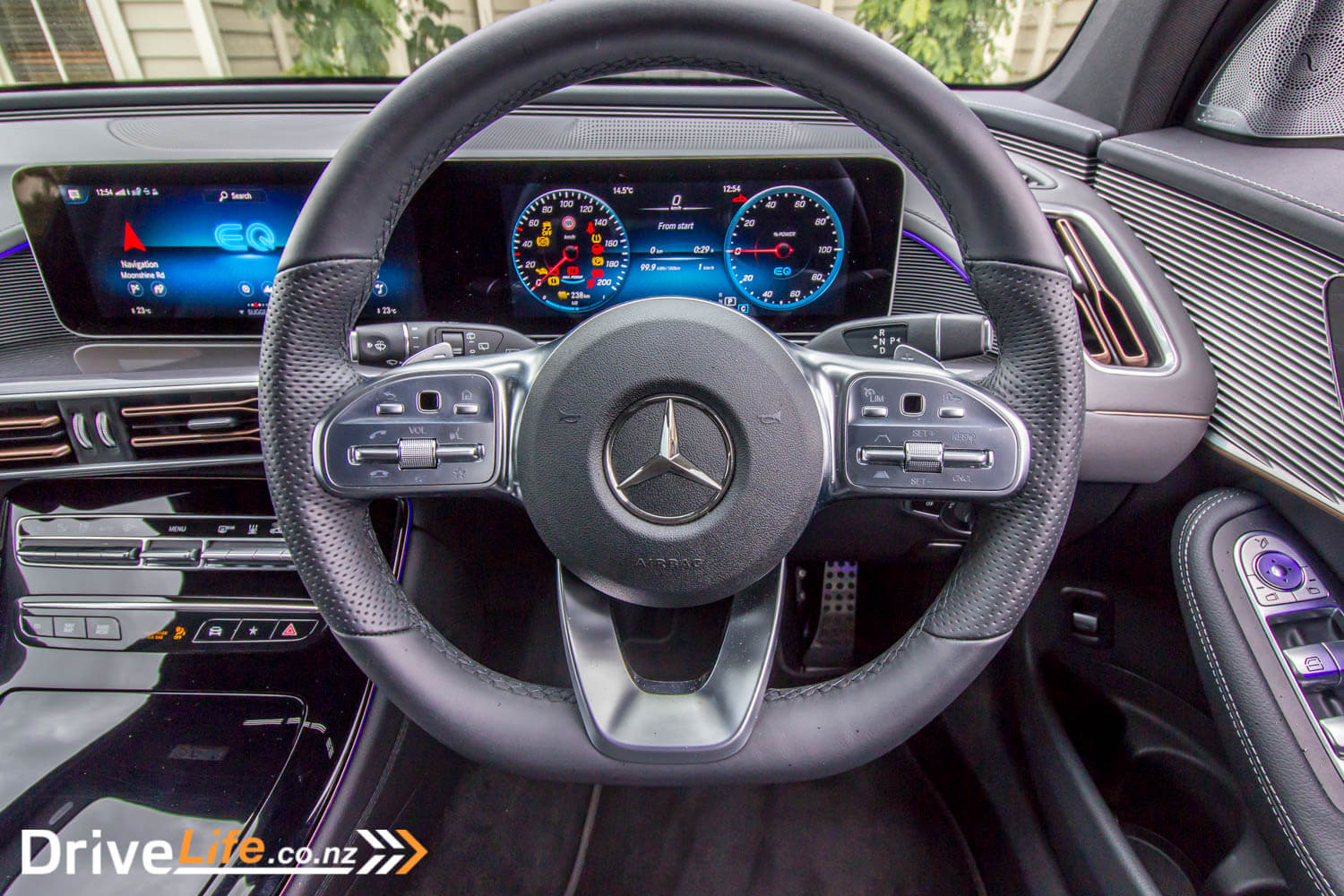
You get four drive modes in this car; Comfort (default), Eco, Sport, and Individual, which of course you can customise. I drove the car in Eco mode quite a lot; there’s still gallons of torque on hand, and it’s an easy daily drive mode. A shame that the car doesn’t remember the last drive mode you used, so you have to select it every time you start the EQC. Eco mode does blunt performance of course as well as reducing the air conditioning performance, and it makes it feel like your right foot is pressing on a piece of wood. It tries its best to make you use less power. As you can imagine, Sport mode tightens everything up and the car takes on a whole new level of urgency. Suspension is adjusted too, but overall Eco mode was fine for me, but if I forgot to select it, Comfort was where this car was at on the Daily Drive.
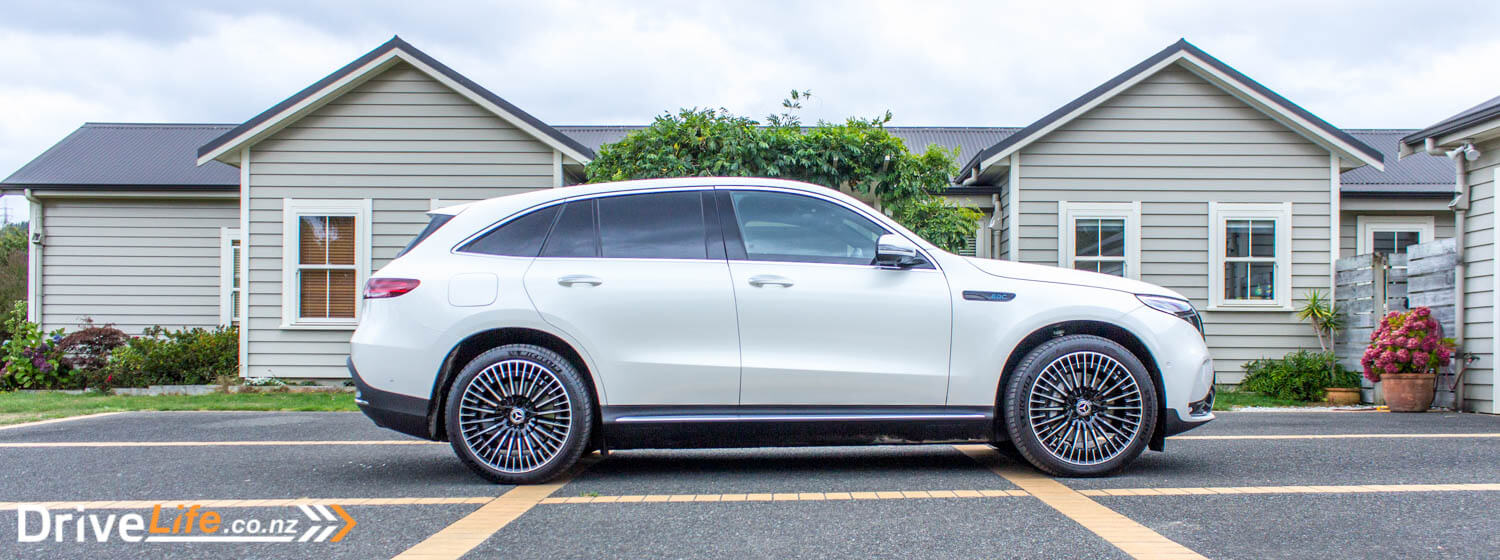
Naturally, being an EV there’s an extra menu option on the centre display, aptly named EQ. This has a handful of different screens to show you EV info, including the flow of power – whether you are charging the batteries or using power. Other brands do this too of course, but a nice touch on the Mercedes-Benz was that instead of having a boring line or arrows that show where the power is going to or coming from, the EQC shows little bolts of power, almost looking like lightning with a blue bolt for charge, and an orange bolt for power being consumed. It added a change to the rest of the pack and made it that little bit more exciting when driving the car. Or maybe I’m just easily amused.
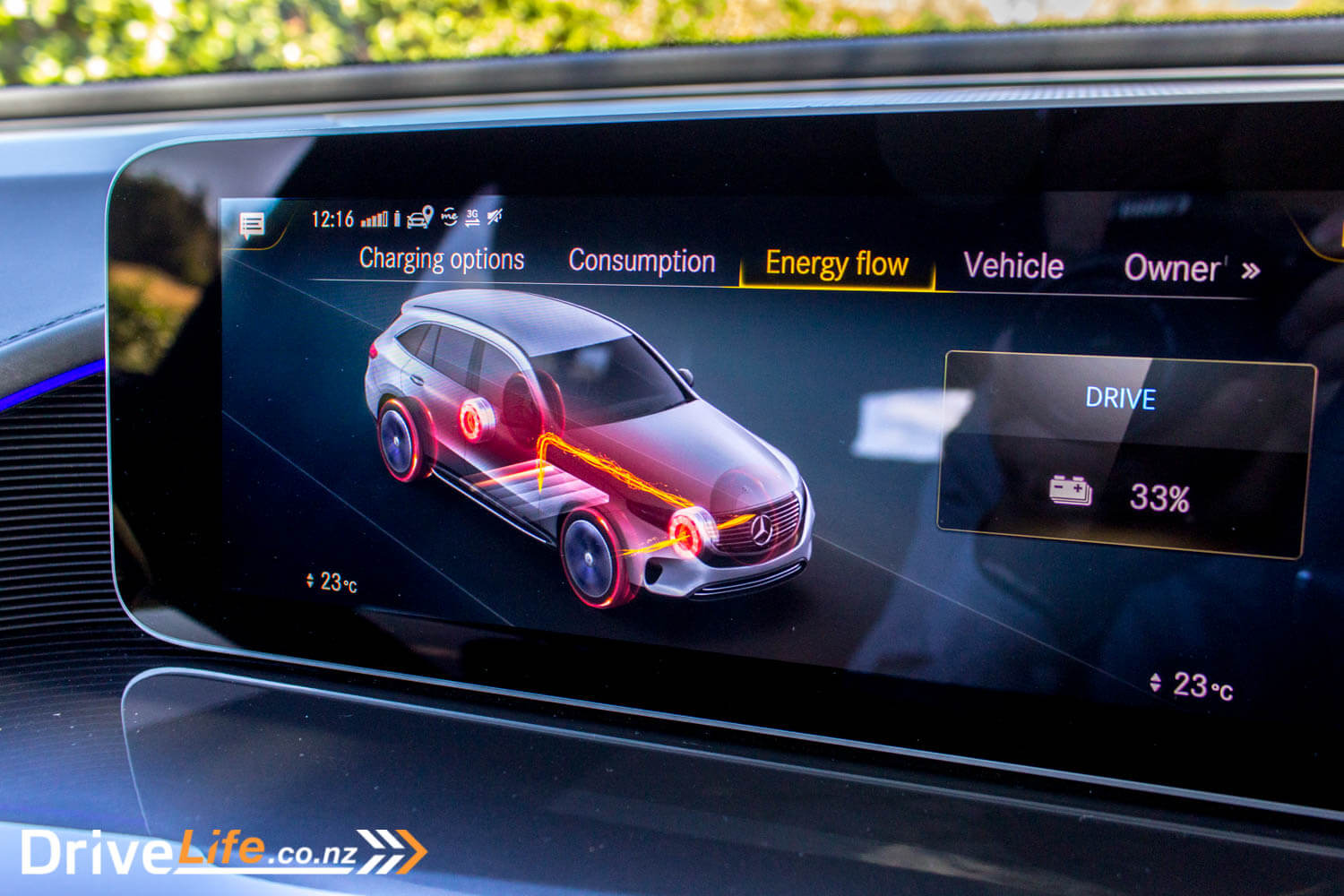
Within that EQ screen is an option to show you where the nearest charging stations are, vital stuff for EV drivers on the hunt for the next charge. You can also access this menu from a button on the centre console. The thing is, I could only ever find two charge stations, no matter where I was. It was always Mitsubishi New Zealand’s headquarters in Porirua, or one other charging location. On the southern coast of Wellington, the screen gave me those two options, and nothing else. At the northern end of the motorway, the same two options. I took the EQC to Southward Car Museum for the last Coffee ‘n Cars meeting for the year, and got the same two places to charge. A huge hole in charging options here, and something Mercedes-Benz NZ really needs to sort out. I wonder if Mitsubishi NZ gets lots of Mercedes-Benz EQCs trolling their car park…
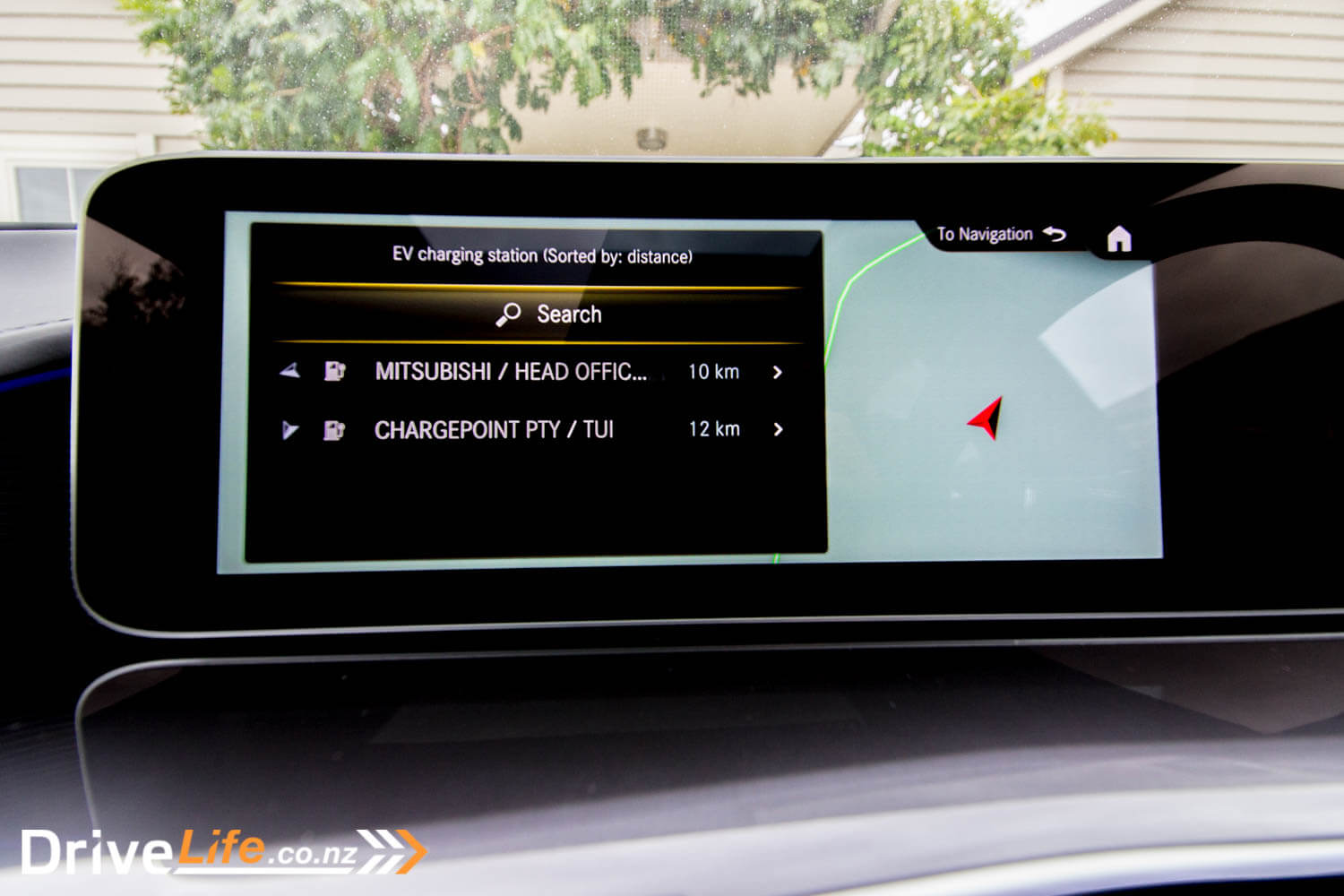
While there’s no electric sunroof blind in the EQC, you do get one of the best adaptive cruise control systems out there. Mercedes-Benz has really nailed this, and the smoothness of their adaptive cruise is a lesson to others. GPS-capability has been carried over to the EQC, so the car will brake itself for a bend if it thinks it needs to. Good to see this isn’t as overly safe as the earlier versions using this system and takes sensible speeds around bends. Bringing the car to a full stop at the lights on the motorway is not a drama, and the EQC will pull away again by itself once the car in front of you starts to move (if you haven’t remained stationary for too long). These extra features of the adaptive cruise bring a whole new level of driveability to cars with adaptive cruise control.
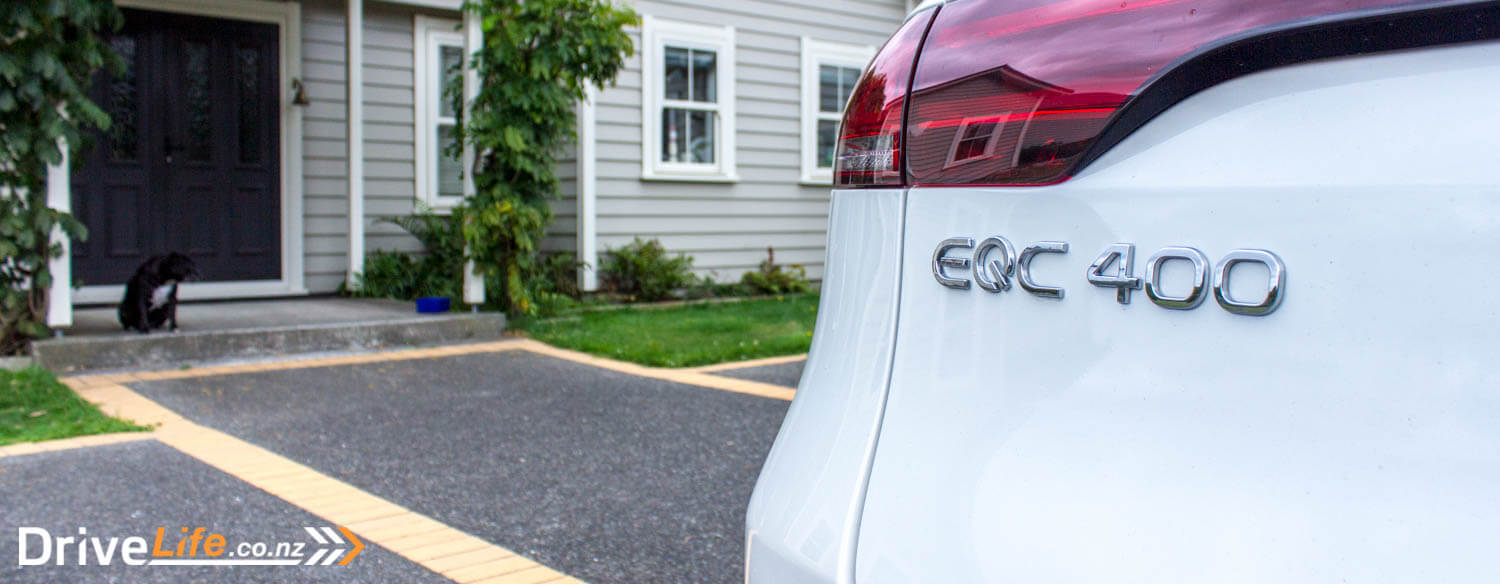
Last thing about the adaptive cruise. I haven’t seen this before on a Mercedes-Benz, but you can now double-tap the cruise control Resume button, and it will set cruise to the current speed limit, based on the last speed sign it passed. I used this all the time, and it became second nature to double-tap the Resume button as soon as I passed a sign. So easy.
There’s other nice touches for the Daily Drive too. Even starting the car is a bit of a blast, as the adaptive LED headlights do a ‘dance’ for about 15 seconds when they turn on. Kids love this. Okay, it’s nothing like the Tesla Model X and its Light Show, but it’s still pretty cool to watch.
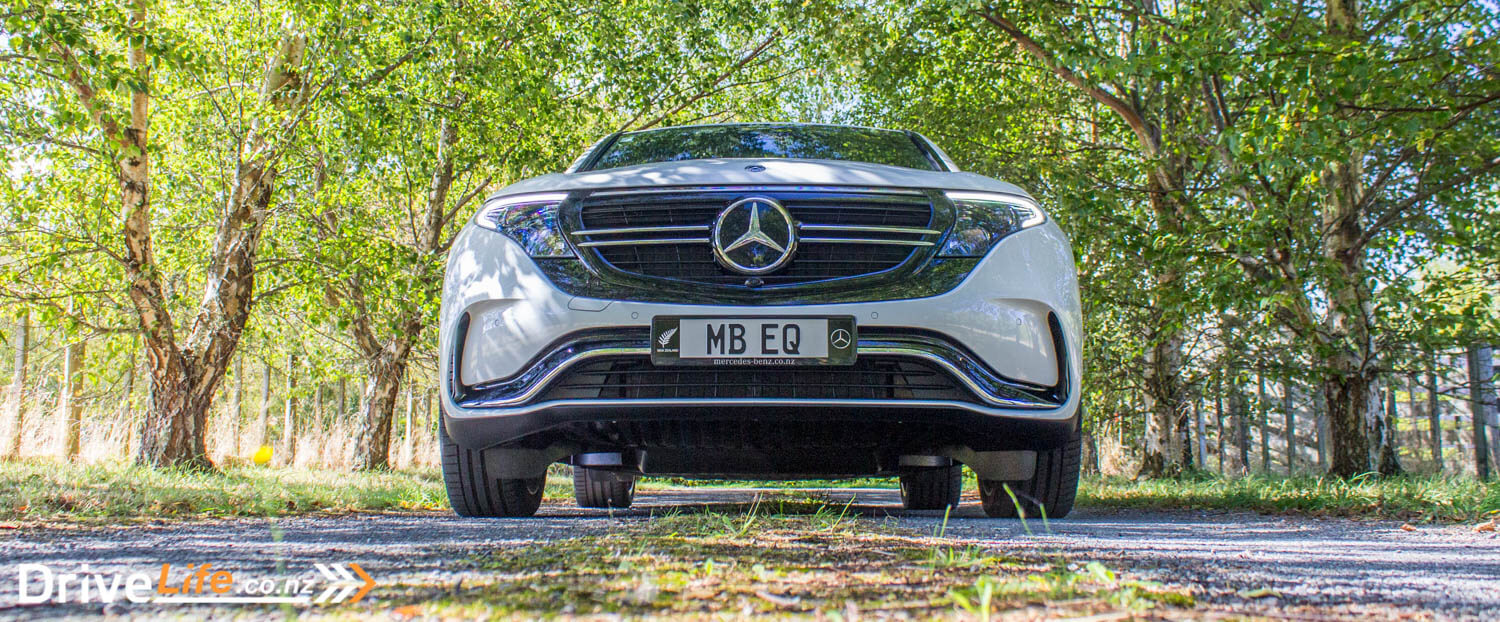
The EQC has brake auto hold, a function which I use all the time. I’m happy to say Mercedes-Benz have dumped the physical button for this, and instead simply pressing your foot firmly on the brake pedal will see a ‘brake hold’ sign come up on the dash, and you can take your foot off the brake, knowing that all four wheels are locked on hard at the lights, or at a stop sign.
Still on the daily drive, the seats are supremely comfortable, and as always, the heated seats are appreciated. There’s a heads-up display (HUD) as standard in this car. A shame it’s not the new 3-panel design we saw in the GLE300d. But still, it gives you the info you need like the current speed limit, your speed, SatNav directions and the current track/station you are listening to.
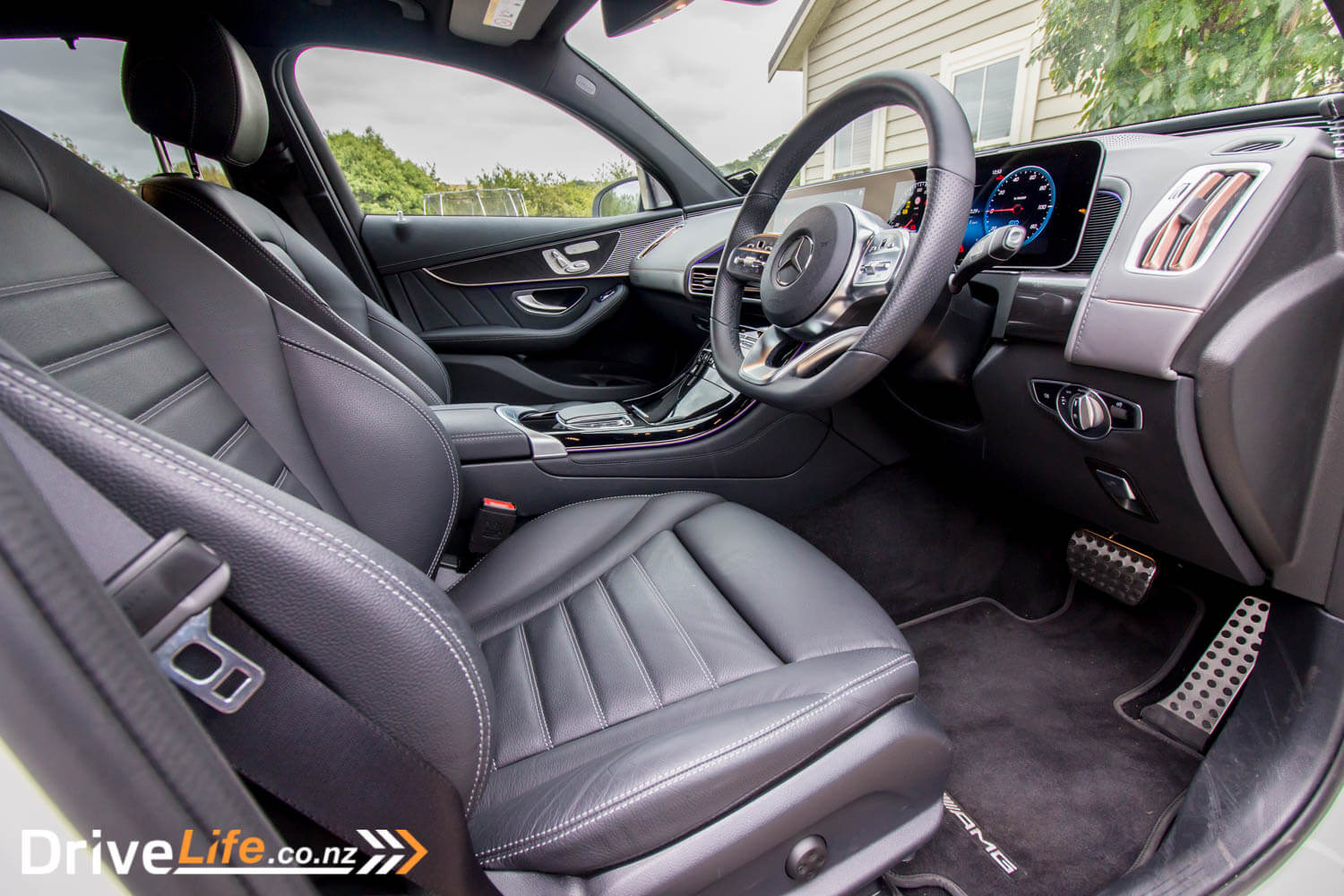
The sound system was amazing, as it generally is with Burmester audio. Some sounds felt like concert hall quality, with a superb spread across all frequencies.
Charging up the car is a simple process. Get home, plug it in. It really is that easy. The charging cable is locked in place, but if you are close with the key in your pocket, you can press the release button under the ‘filler’ flap, and the cable can then be removed. I mainly used a standard, 8-amp socket at home in the driveway to charge the car up, and this coped with my 80km or so daily commute.
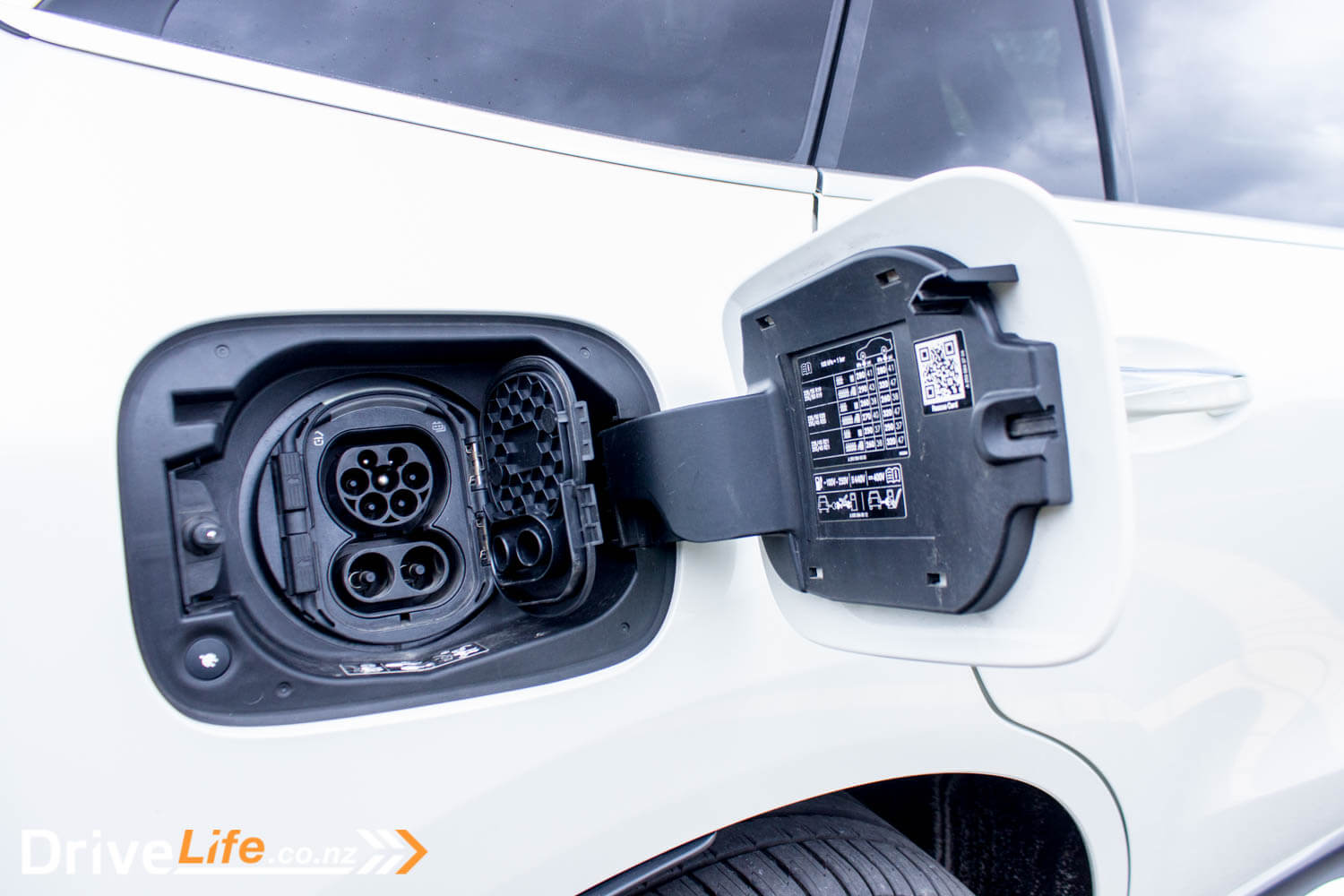
On one trip to Southward Car Museum, I left home with 384km of range. After the 65km drive there, we had 346 left, which is a difference of 38km. Pretty good start! Returning home later, we had covered 122km total with 280km left in the ‘tank’. That’s a difference of 104km, so still a nice result.
That night, I decided to take the car to a fast charger, get it to 100%, and then drive it until it almost ran out of juice. My first visit was to the local New World. I parked the car up, stuck it on charge using the Chargenet charger in the car park, and went shopping.
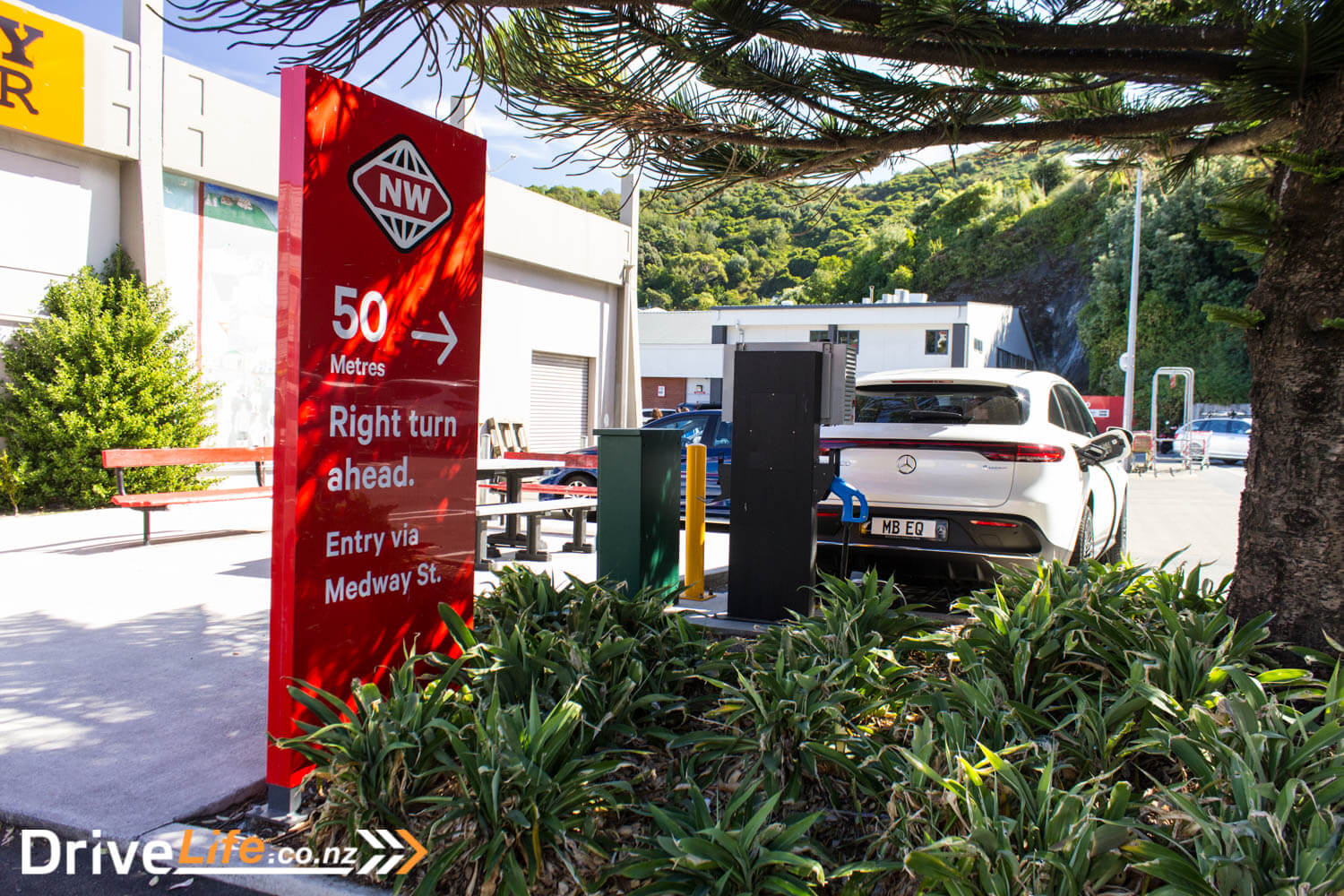
The only problem here was I didn’t realise that the charger only puts out 25kW max, so it didn’t get anywhere near charging up the EQC while I was shopping. So out with the Chargenet app, I found another one that did the full 50kW charge on Taranaki Street in the city, only ten minutes away. I went to use that charger, but it was broken. Out with the app again, and I noticed the Ghuznee St 50kW charger was available (no one charging) so it was a five-minute drive there, park up and charge up. Mercedes-Benz had supplied us with a Chargenet key fob, a small plastic disc about the size of a 20-cent piece. Instead of using the app, you simply wave the key fob in front of the charger, and it then becomes available to use. I didn’t think this would be a big deal, but it did make it simpler, so much so I ordered my own key fob from their website, and it only costs $1 (+$5 P&P).
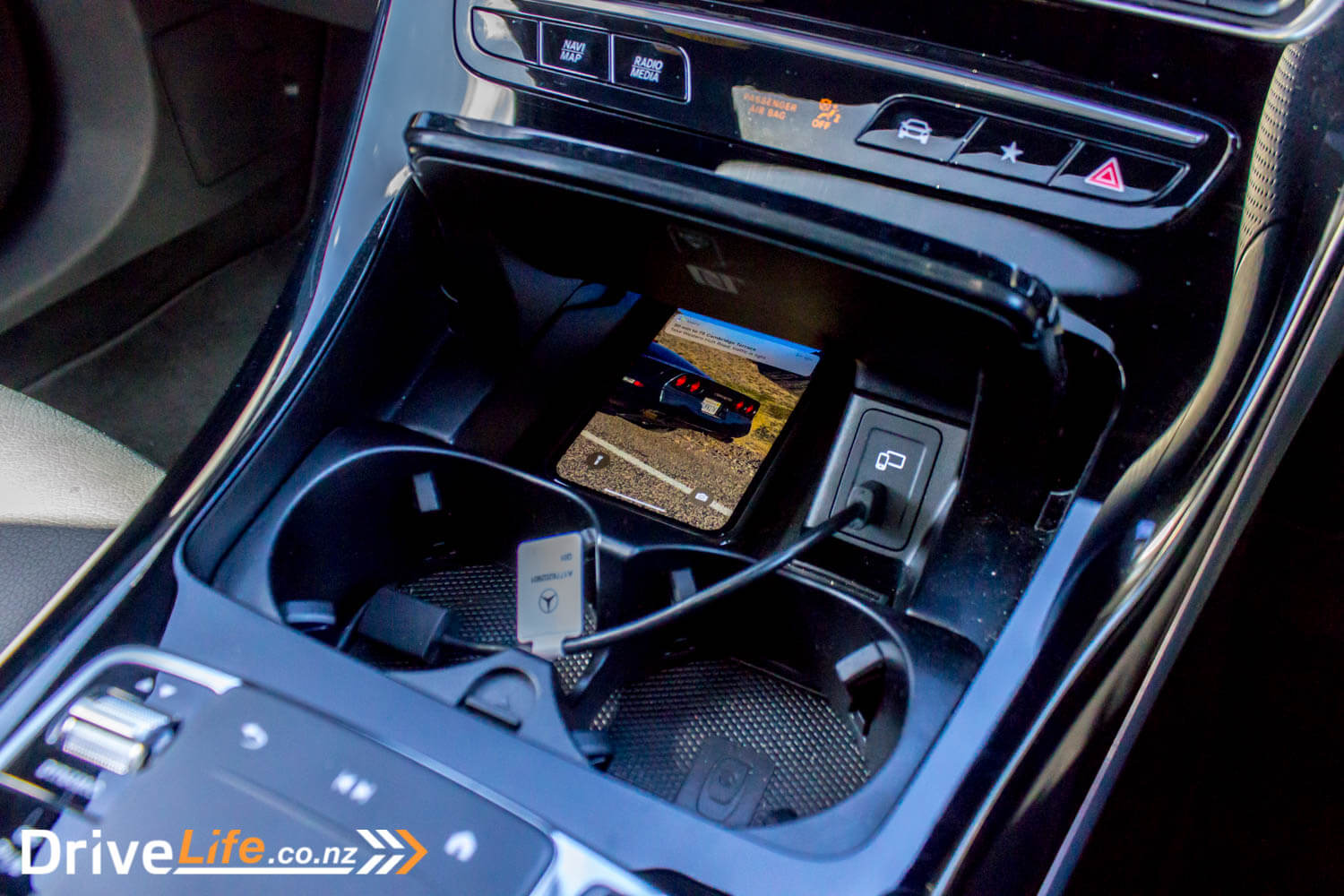
The Ghuznee Street charger got me from 65% to 100% in 40 minutes, for $15.80 and a charge of 25kW. Keep in mind you normally only fast charge to 80%, as that last bump to 100% from 80% can take a while.
I got home and put the car on charge again – I wanted it at 100% the next morning. And so it was, and with 422km range showing, I left the car in Comfort mode the whole time and did my daily drive, day in, day out. With a solid 50/50 mix of city and highway, I managed to get 360km out of the EQC before I chickened out and charged it up again. That’s a reasonable return, and just over what the car should do. Since the average kiwi drives 27km a day, I think 360km should do most people. The estimated range under WLTP is 353km, so I can’t complain about my result.
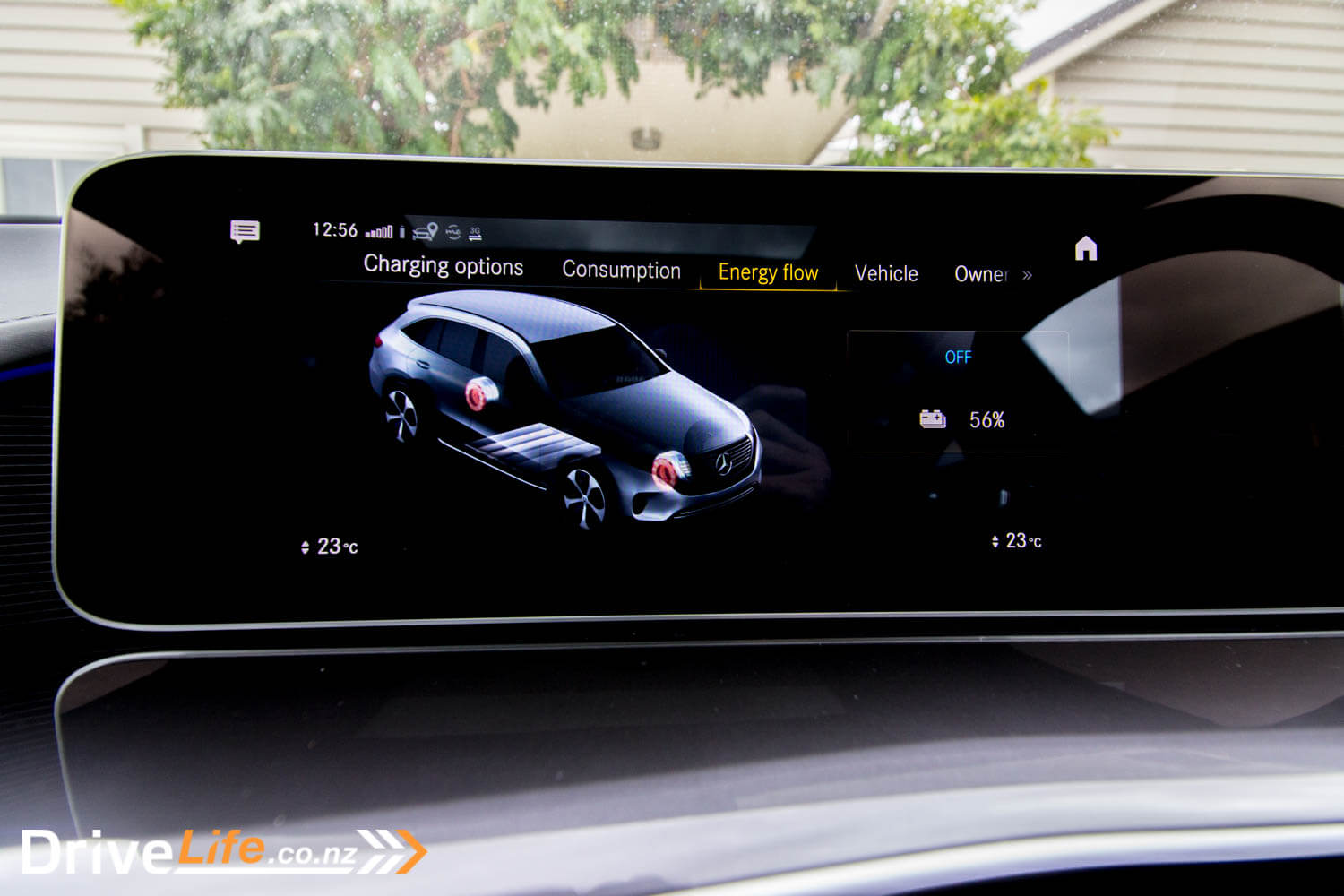
I can’t remember the last time I talked about the engine bay in a car, but the EQC is worth mentioning. There are some massive, thick bars that envelop the front electric motor in the EQC, and they look mighty impressive. I’ve not seen this on other EVs, and even in the EQC you need to pop the plastic cover to see them, but they are an impressive piece of engineering.
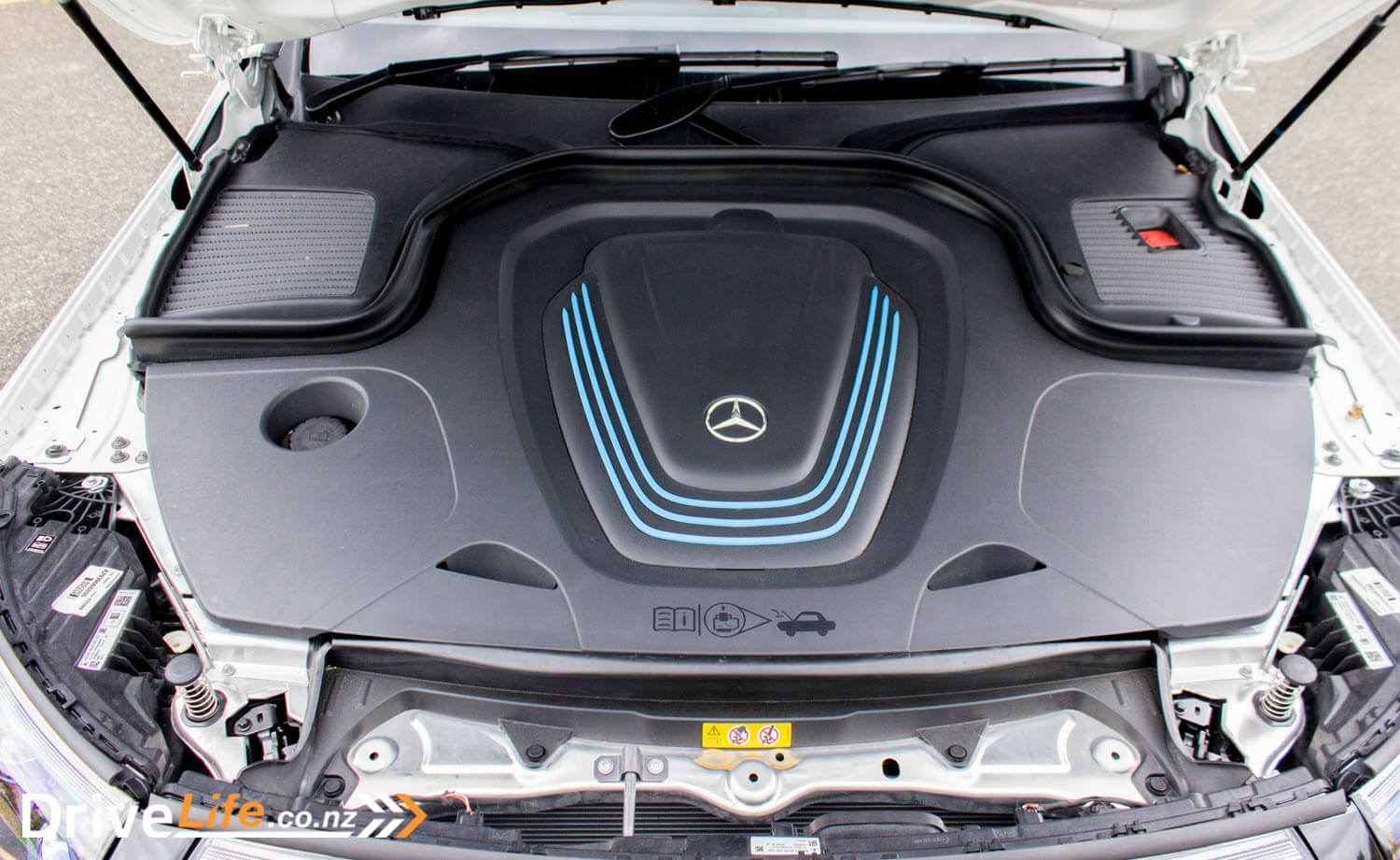
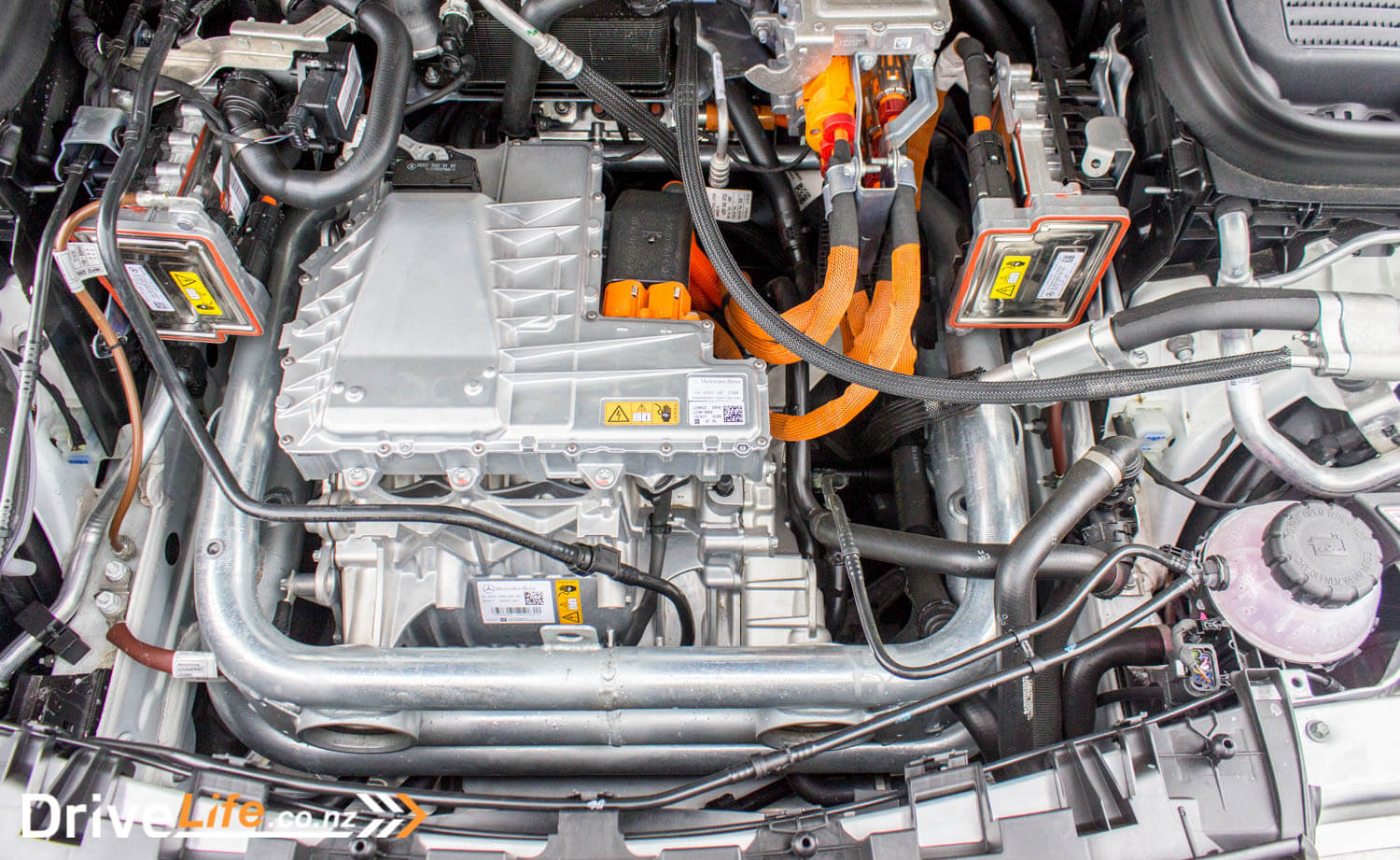
What about driving the EQC? With all that weight down low with that 650Kg battery pack, it sits relatively flat. It does tend to understeer if you push it too hard, but overall it’s a car you can confidently chuck about, even with a weight of 2,425Kg. I’m certain the 4MATIC all-wheel-drive system is helping here, with an electric motor at each end of the car. It’s a no-fuss SUV, and has the added bonus of a silent ride. Steering is excellent, and the brakes are excellent. It’s just like any other medium-size Mercedes-Benz SUV.
Mercedes-Benz suggests that the EQC should use 21.4kWh/100km. The kWh (kilo-watt-hours) rating can be compared to the litres/100km for a petrol or diesel car, or even miles per gallon if you are really old school. With 800km of combined driving over a week, I managed 23.3 kWh/100km, so not too far off the recommended.
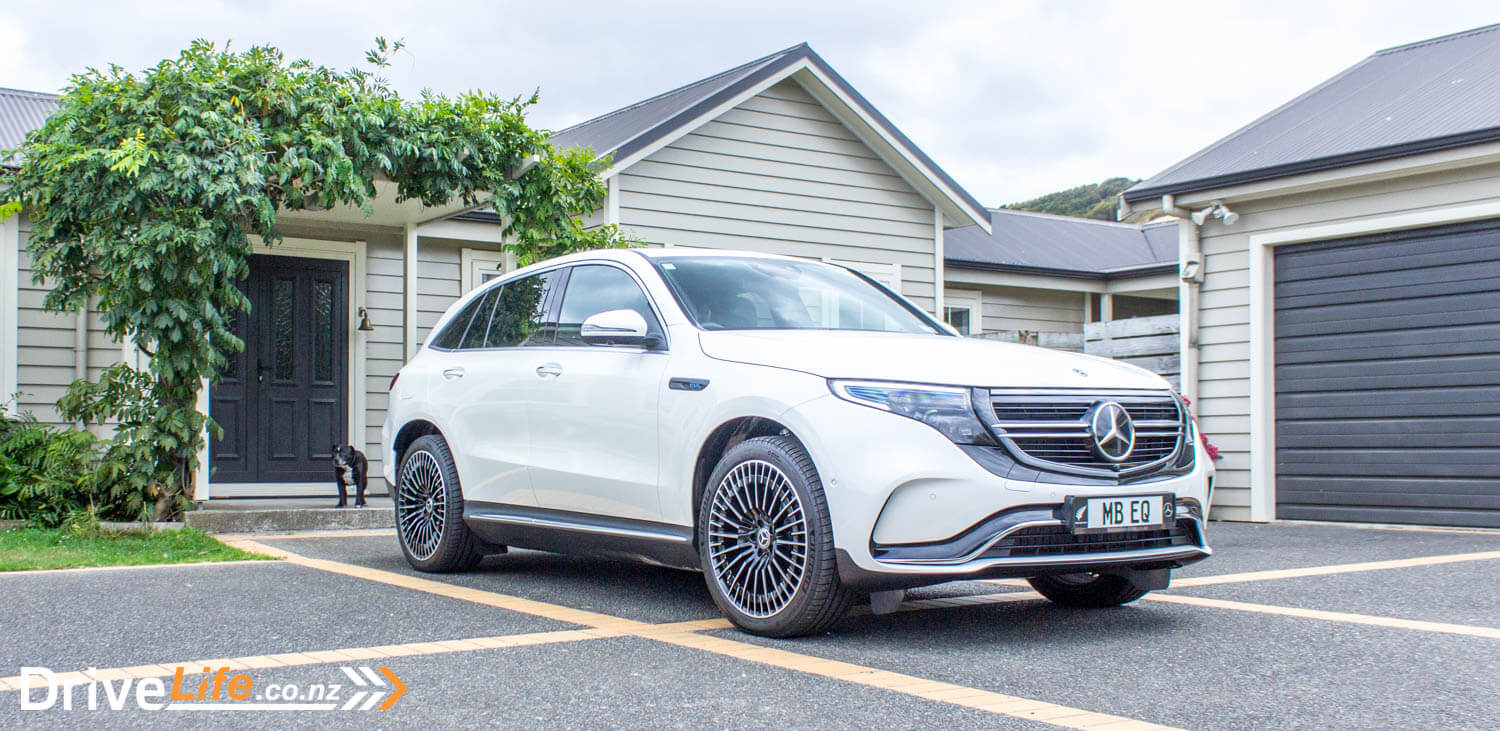
What’s The Competition For The 2020 Mercedes-Benz EQC?
| Brand/Model | Engine | Power/Torque kW/Nm | Cargo capacity, litres | Battery capacity, kWh | Range, km (WLTP*) | 0-100km/h | Consumption, kWh/100km | Price |
| Tesla Model X Long Range | Dual electric | 398/755 | N/A ** | N/A | 507 | 4.6 | 19.8 | $159,900 |
| Audi e-tron 55 | Dual electric | 300/664 | 660 | 95 | 417 | 6.6 | 26.4 | $148,500 |
| Jaguar I-PACE (base) | Dual electric | 294/696 | 638 | 90 | 470 | 4.8 | 22.0 | $144,900 |
| Mercedes-Benz EQC | Dual electric | 300/765 | 500 | 80 | 353 | 5.1 | 21.4 | $142,900 |
*WLTP stands for Worldwide harmonised Light vehicle Test Procedure. It includes a standard for measuring the range of EVs.
** Tesla only provides an all-seats folded figure
What’s The Pros and Cons For The 2020 Mercedes-Benz EQC?
| Pros | Cons |
| Incredibly smooth all round Interior quality Performance Grip/handling Seat comfort/adjustability Overall excellence | Windscreen reflections On-screen charging options |
2020 Mercedes-Benz EQC Specifications
| Vehicle Type | Medium-large, 5-door, electric SUV |
| Starting Price | $142,900 |
| Price as Tested | $147,000 |
| Engine | Dual 150kW electric |
| Power, TorquekW/Nm | 300/765 |
| Spare Wheel | None – tyre sealant provided |
| Kerb Weight, Kg | 2,425 |
| Length x Width x Height, mm | 4761x1884x1624 |
| Cargo Capacity litres (seats up/seats down) | 500/NA |
| Economy, kWh/100km | Advertised Spec – combined – 21.4 Real World Test – combined – 23.3 |
| Battery capacity, kWh | 80 |
| Towing Capacity Kg, unbraked/braked | 750/1,800 |
| Turning circle, metres | 11.8 Small: 6-10m / Medium 10-12m / Large 12m+ |
| Warranty | 3-year unlimited km Battery pack: 8 years, 160,000km |
| ANCAP Safety Ratings | 5 Star |
